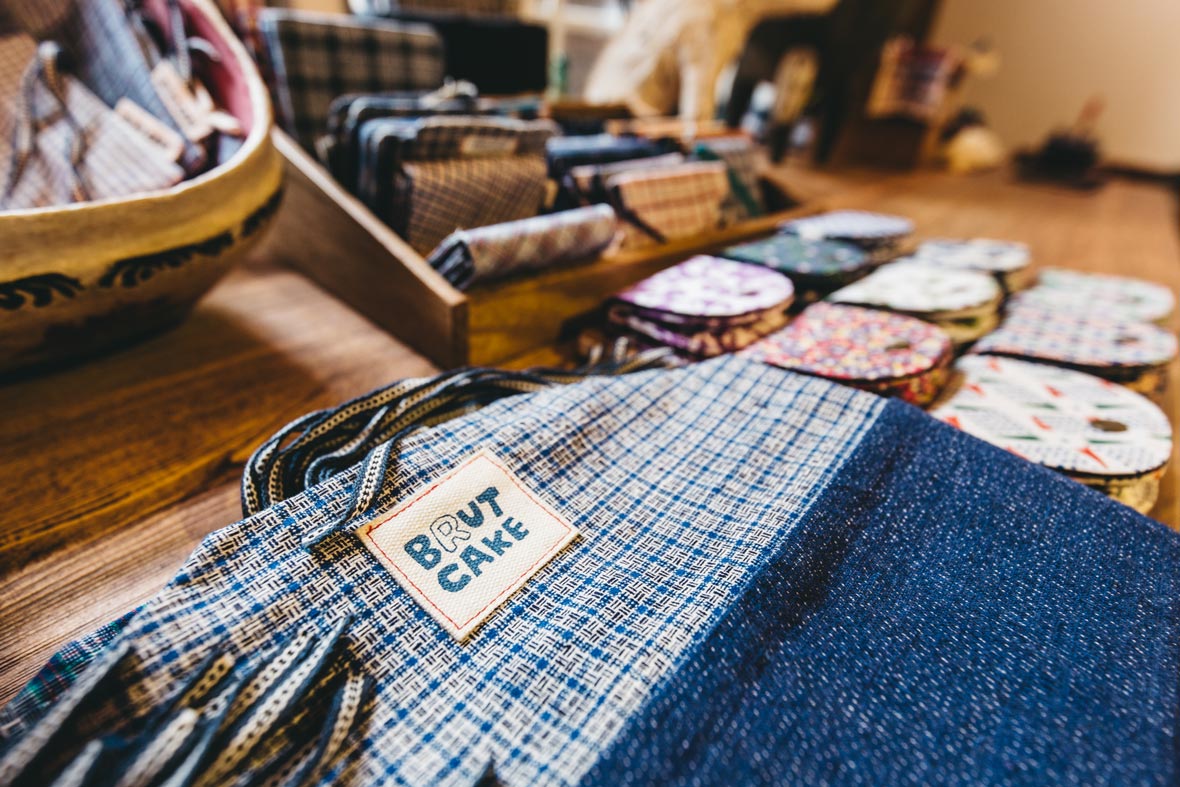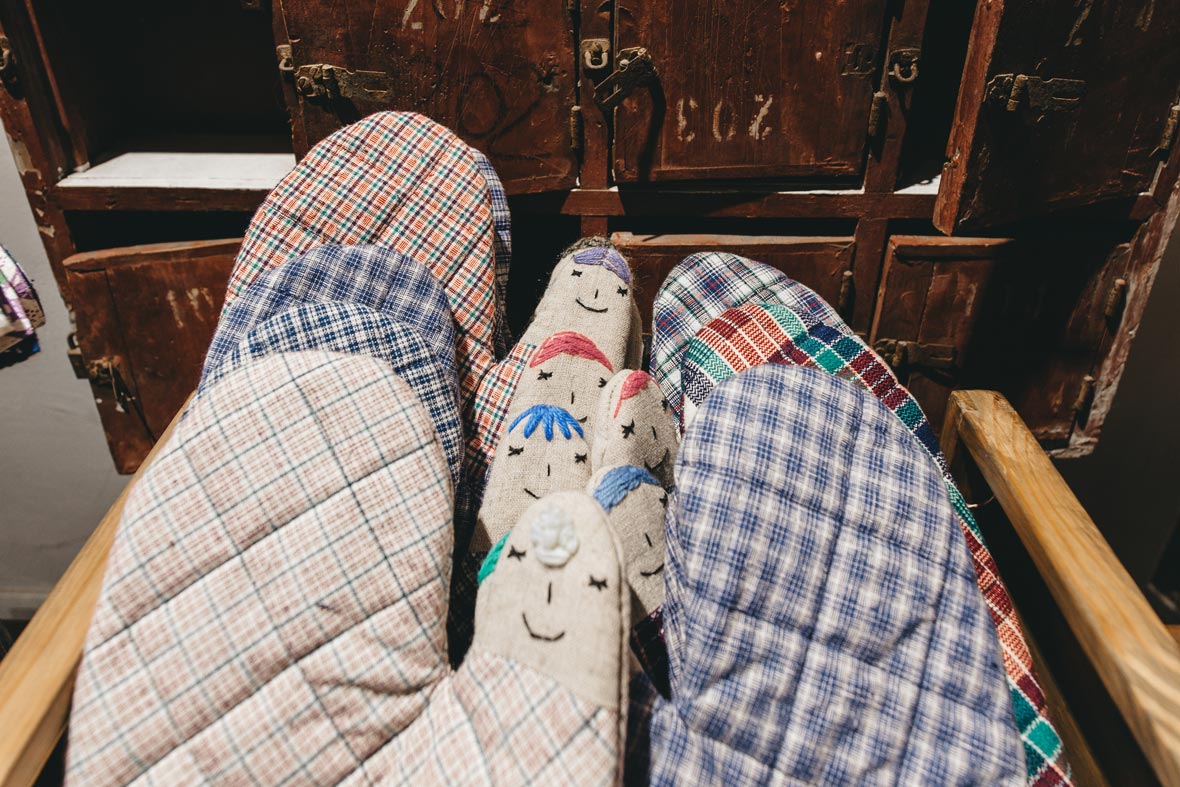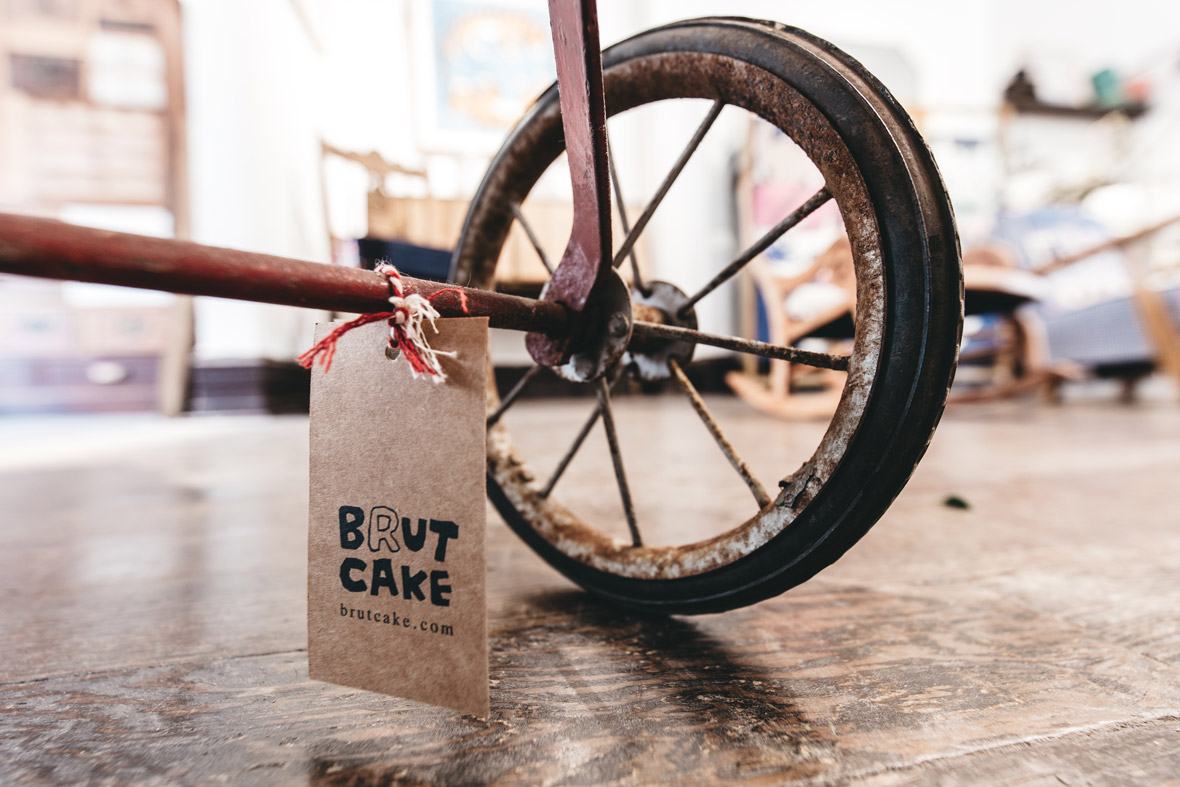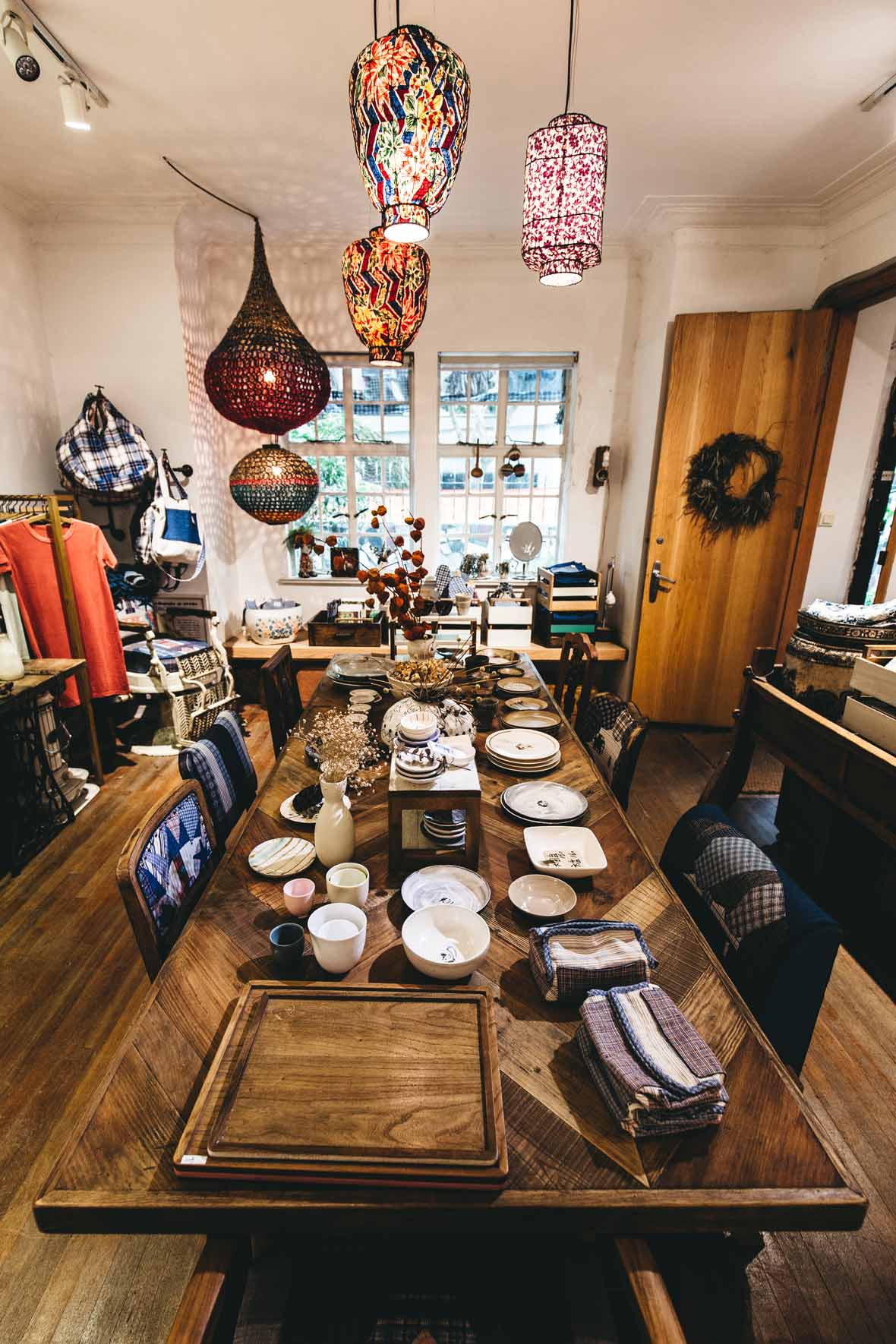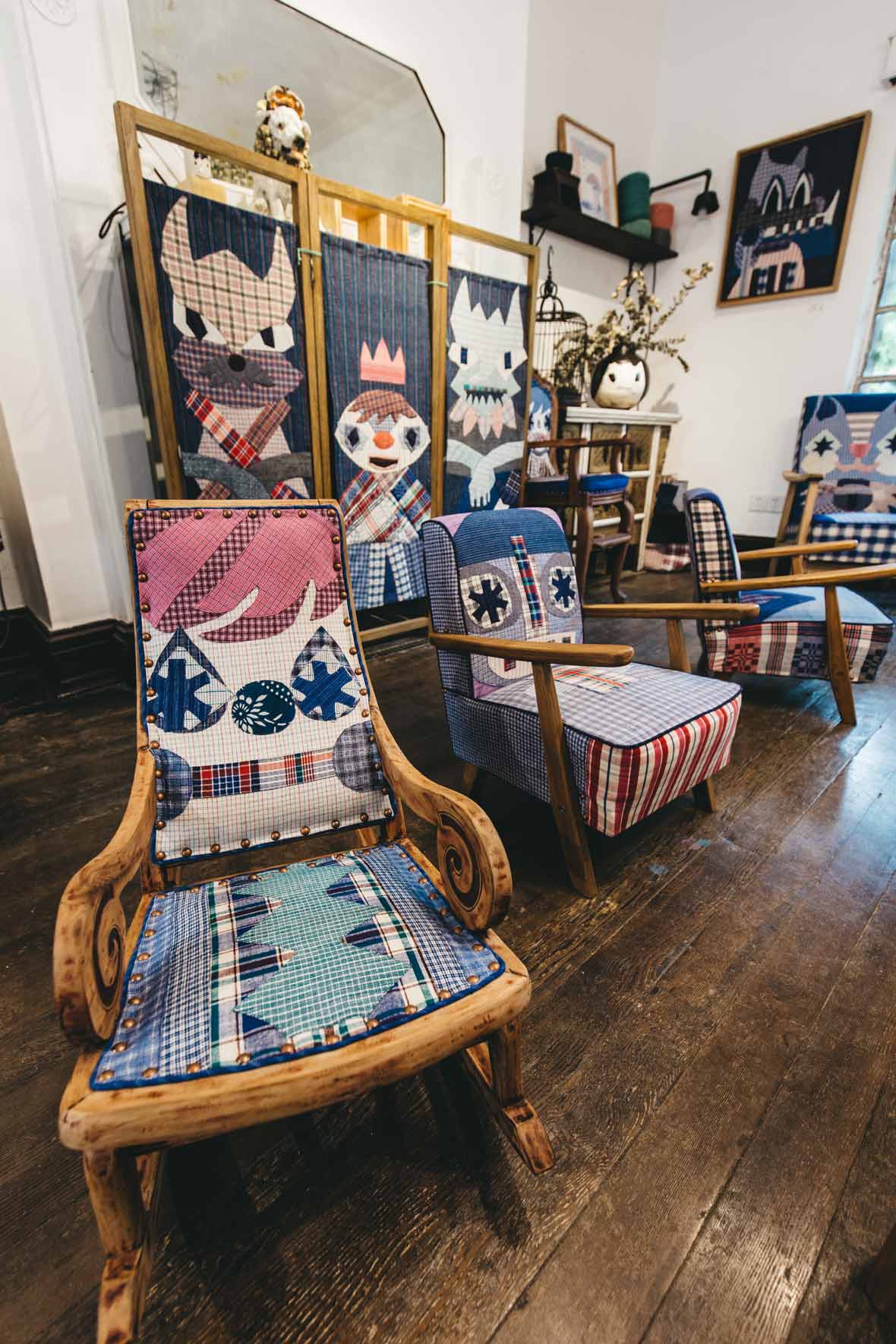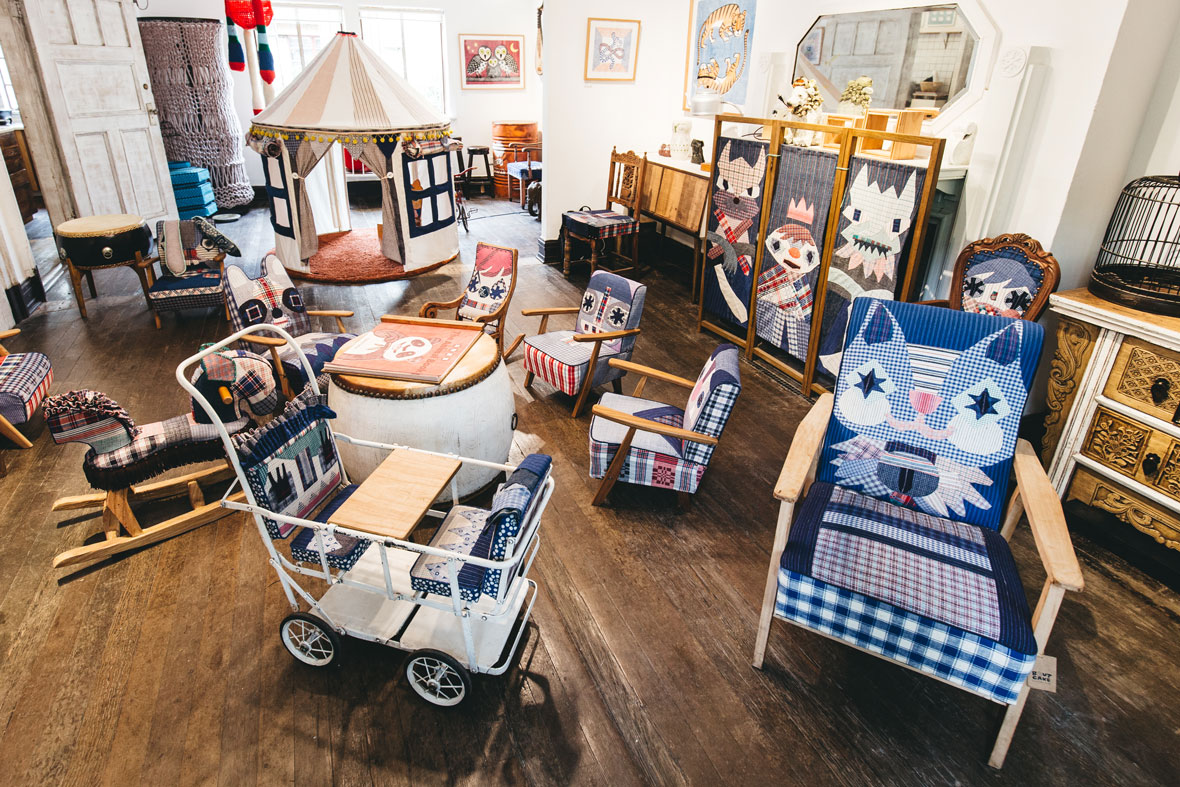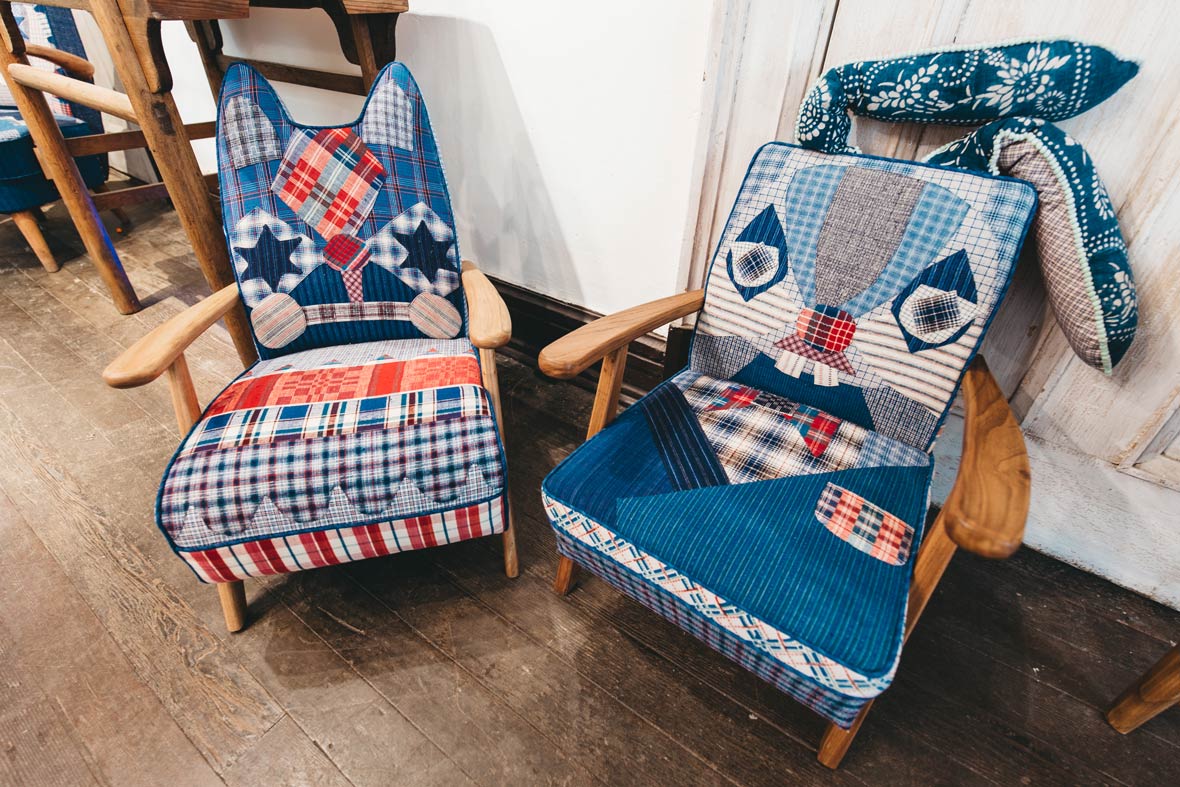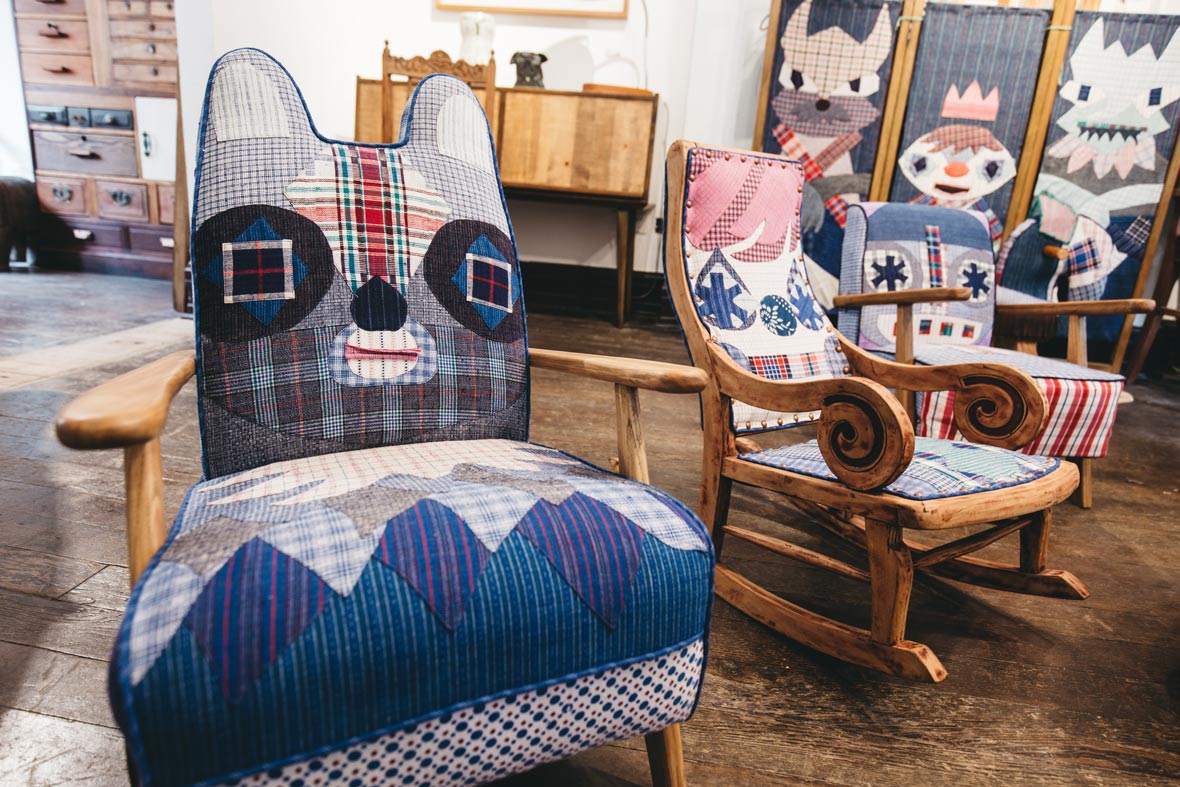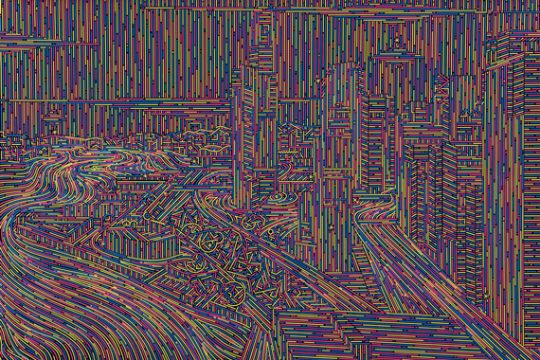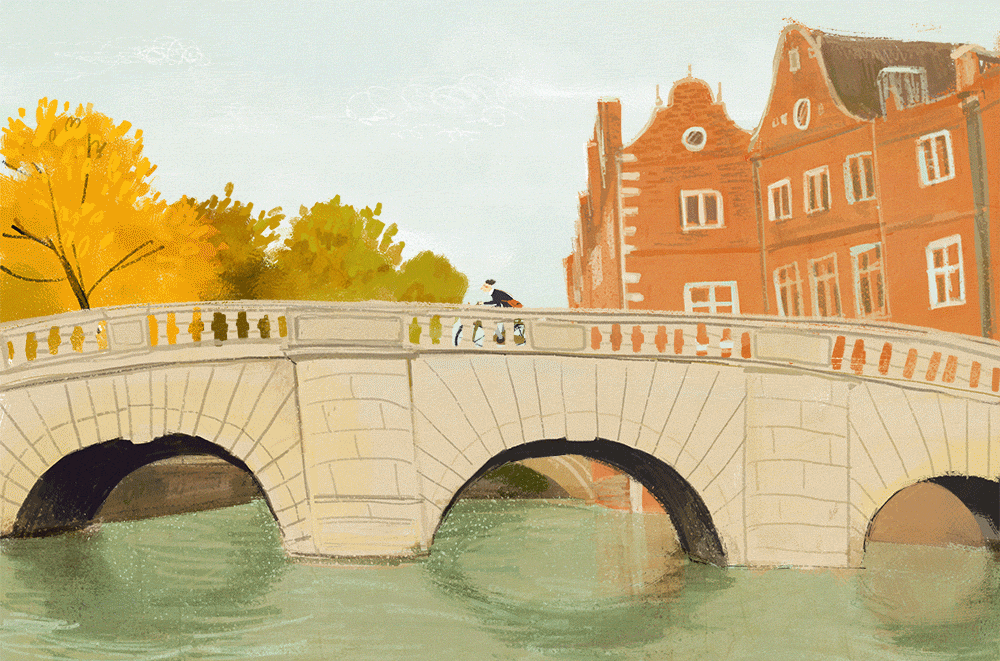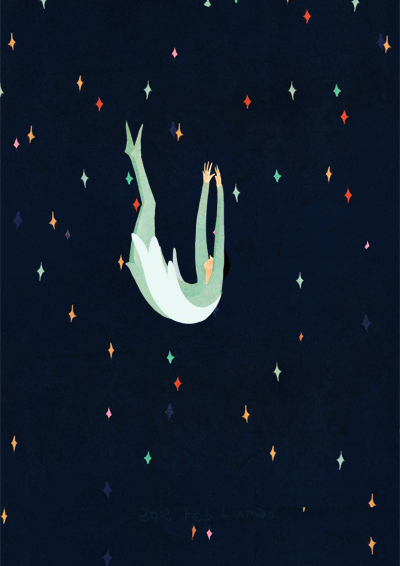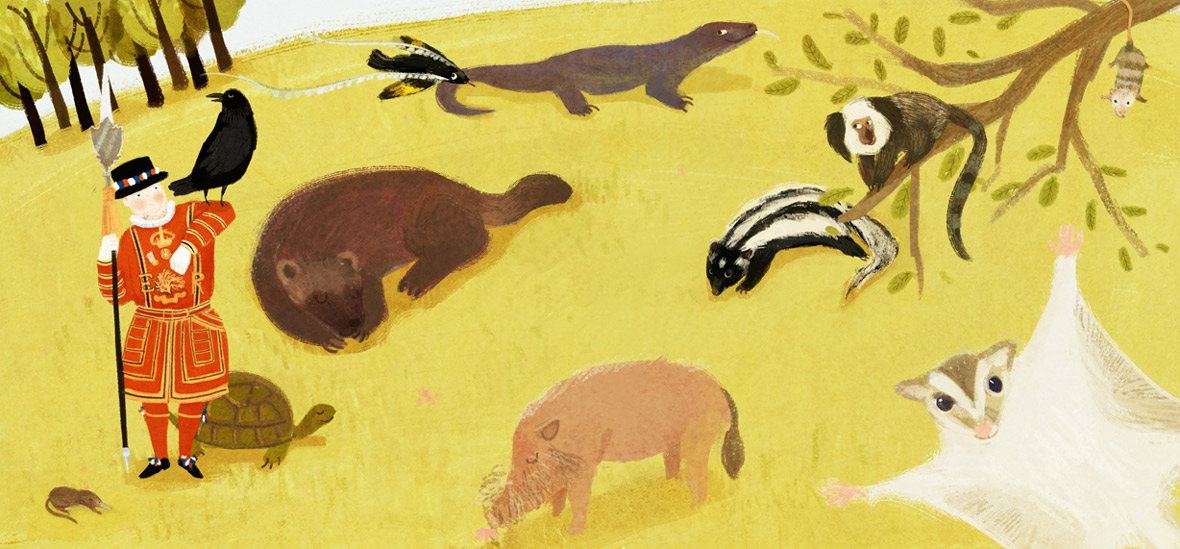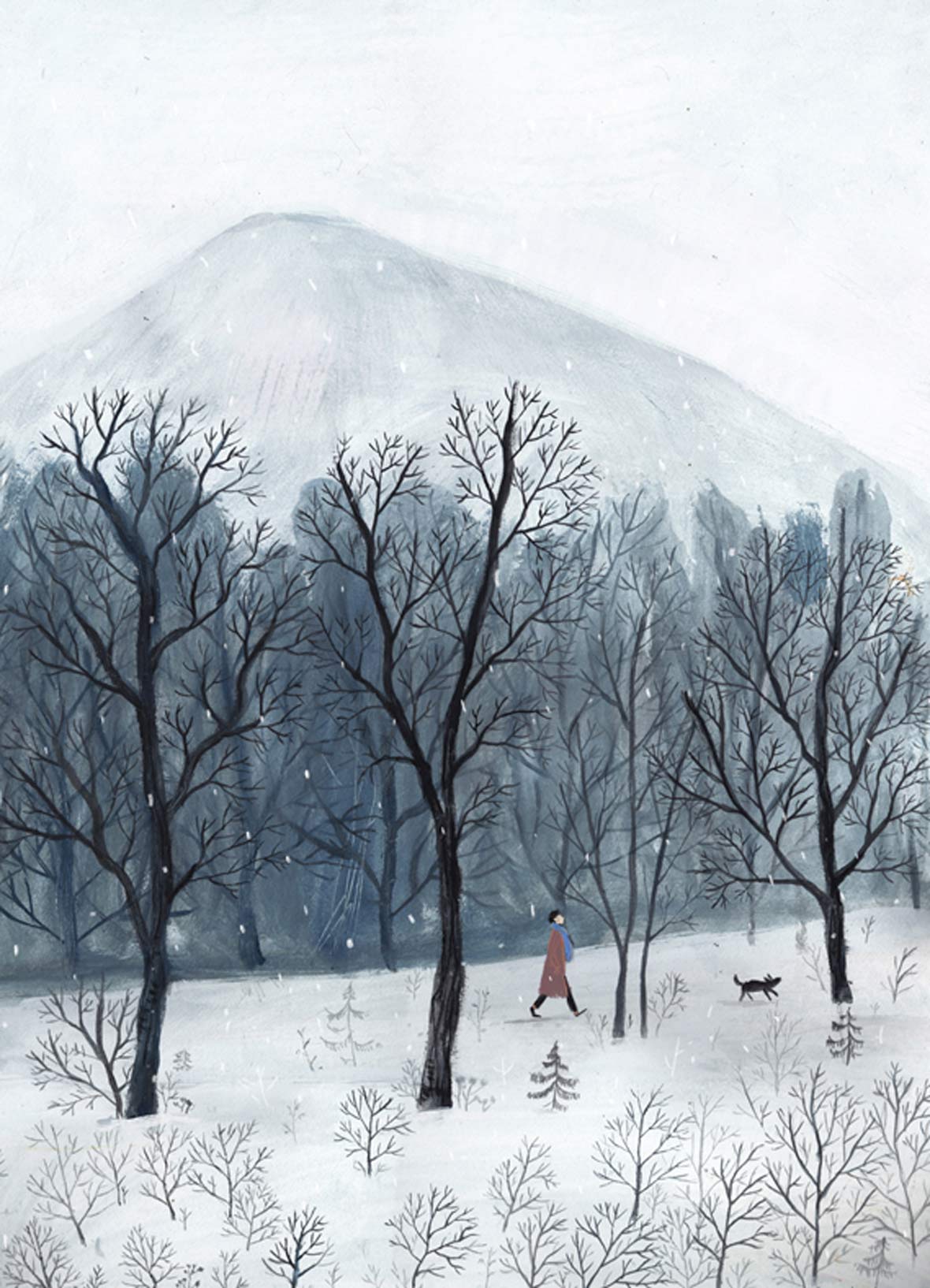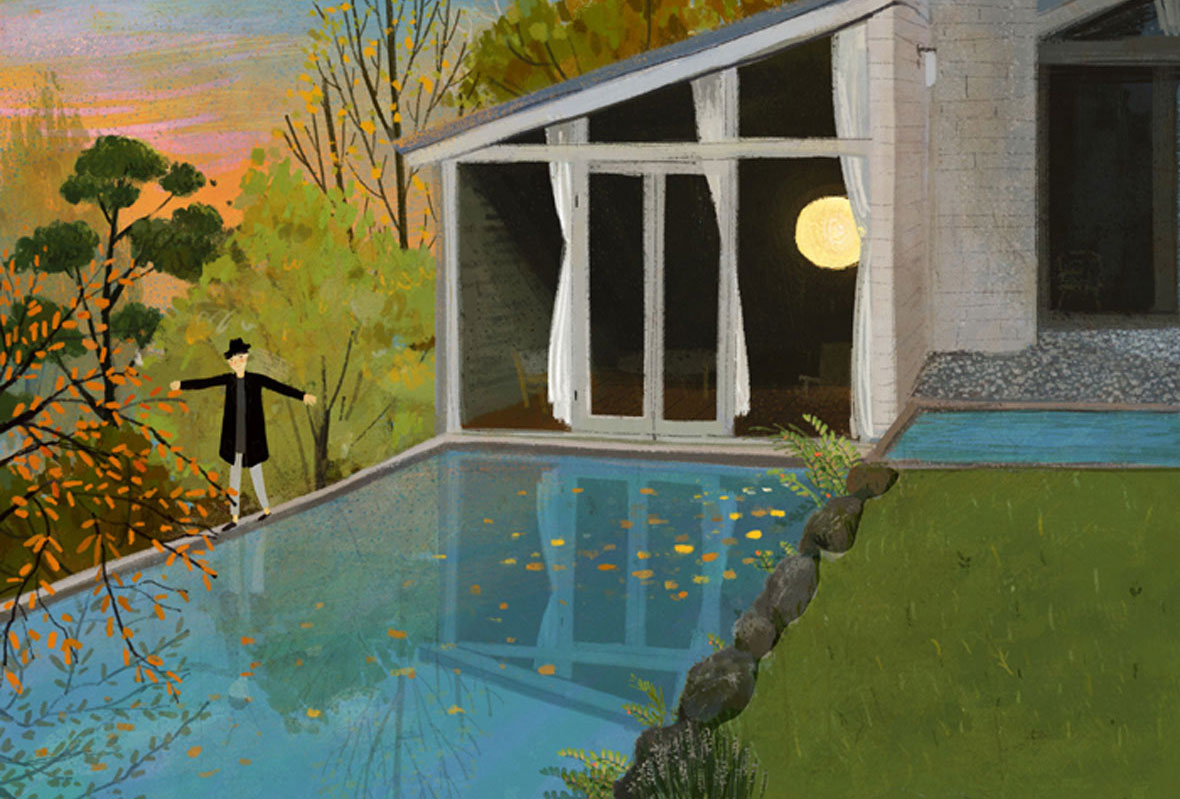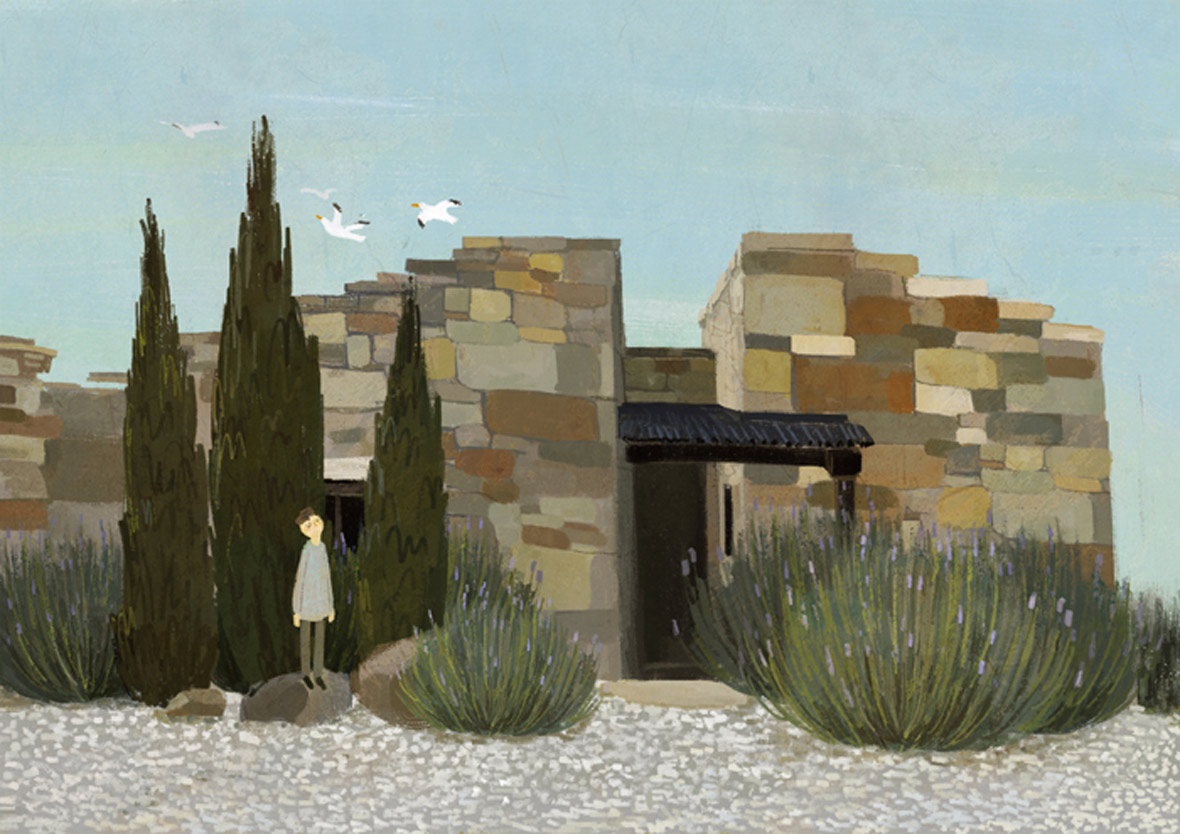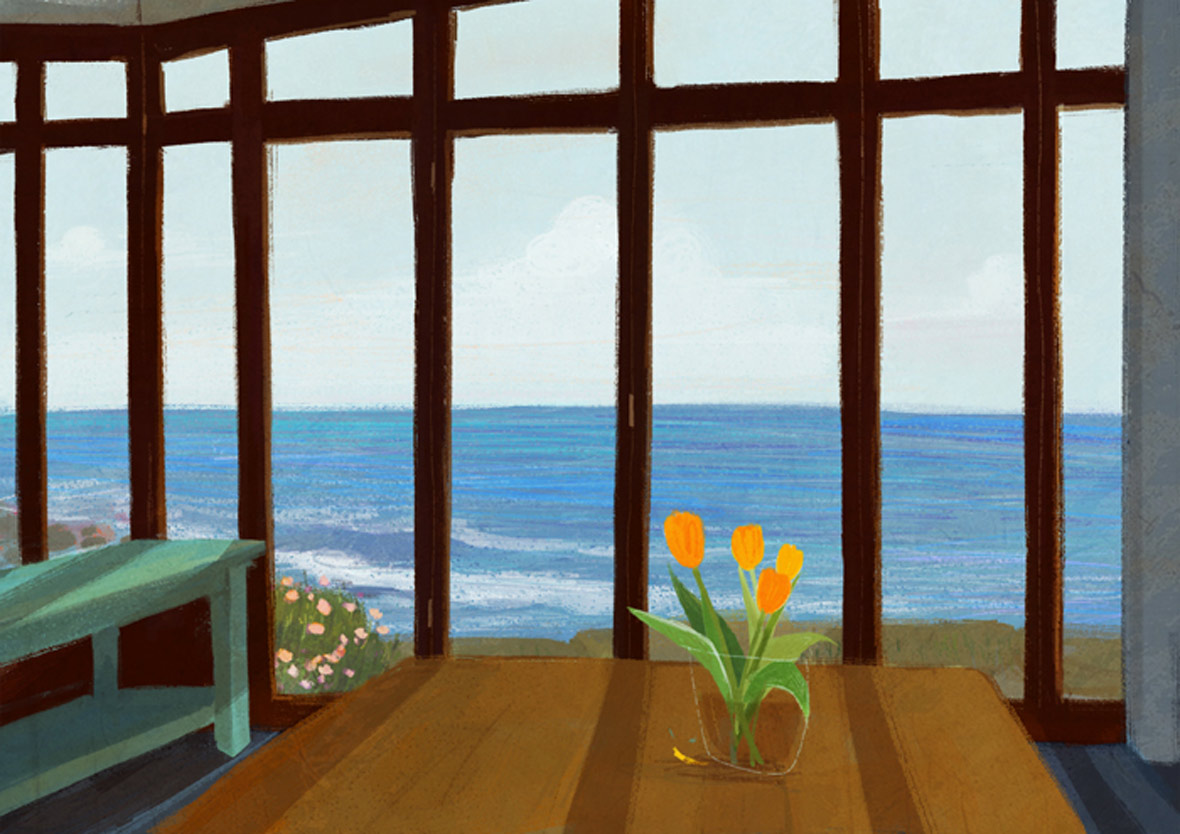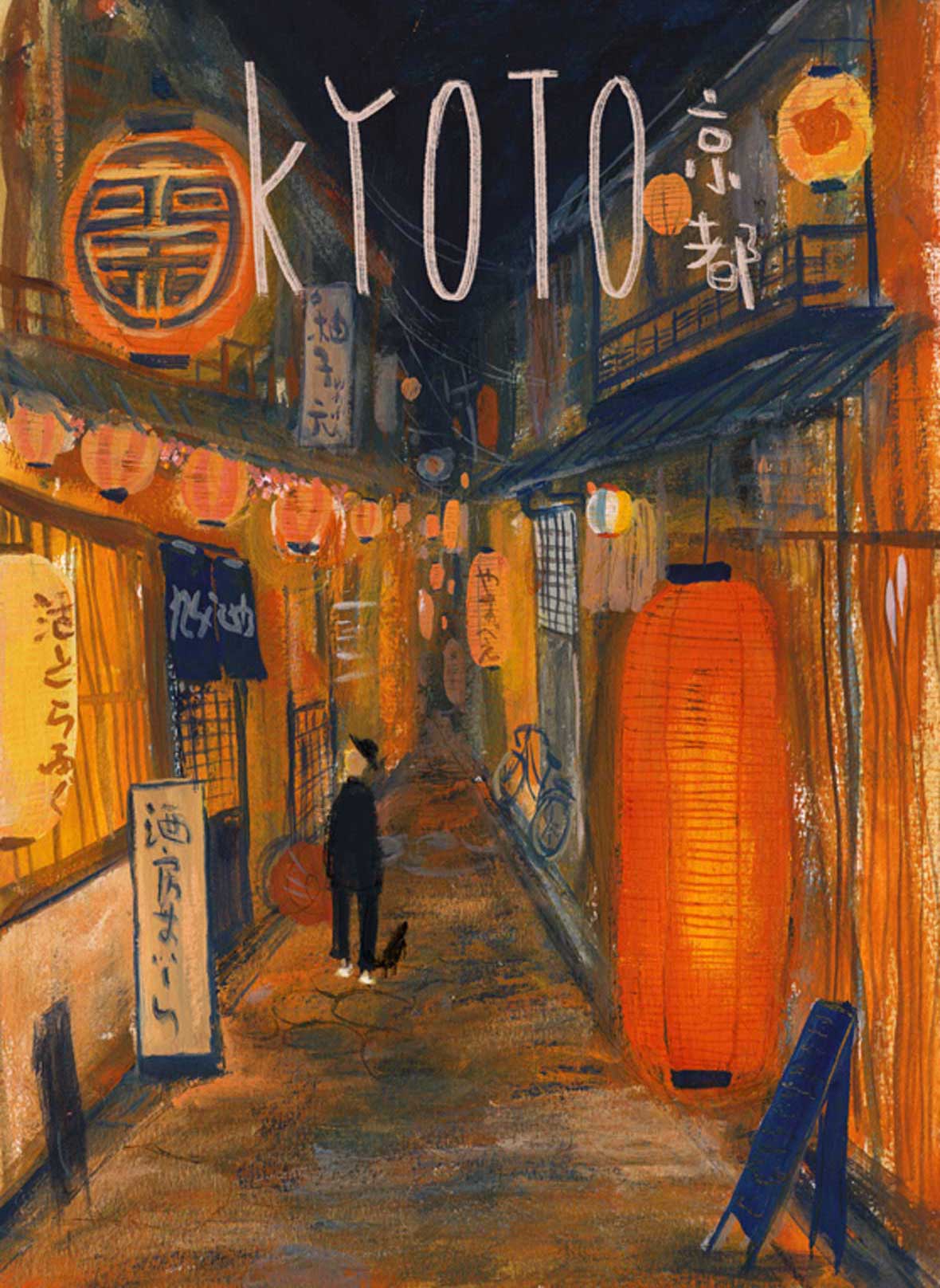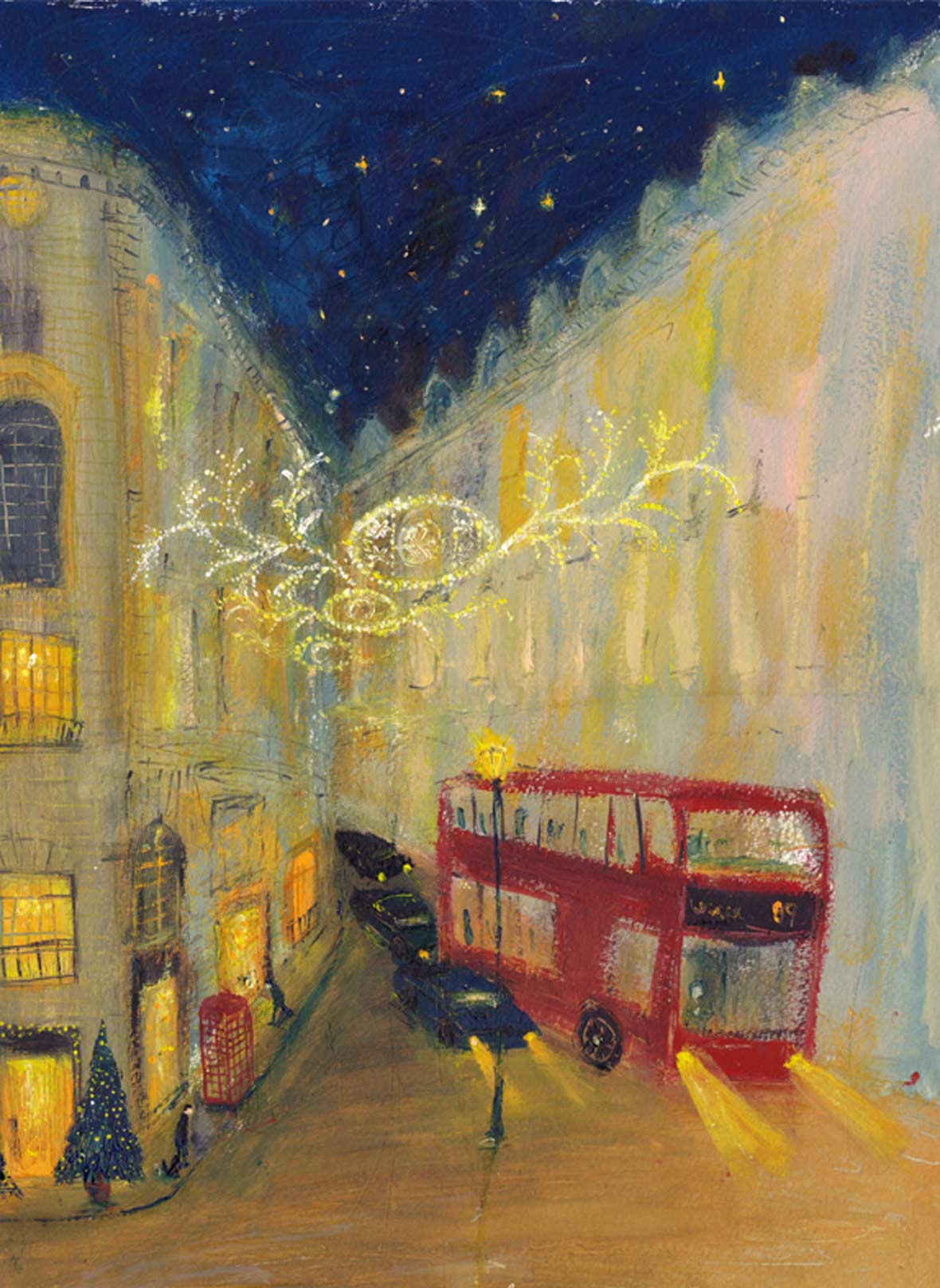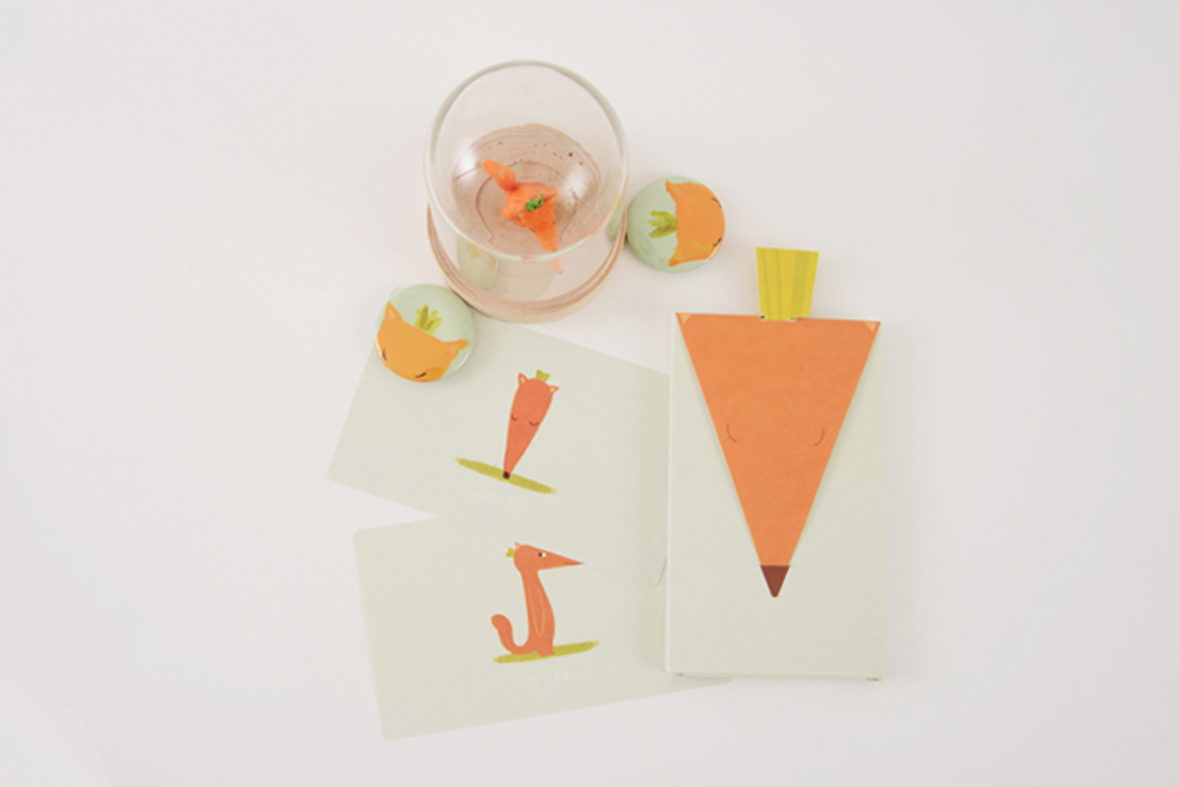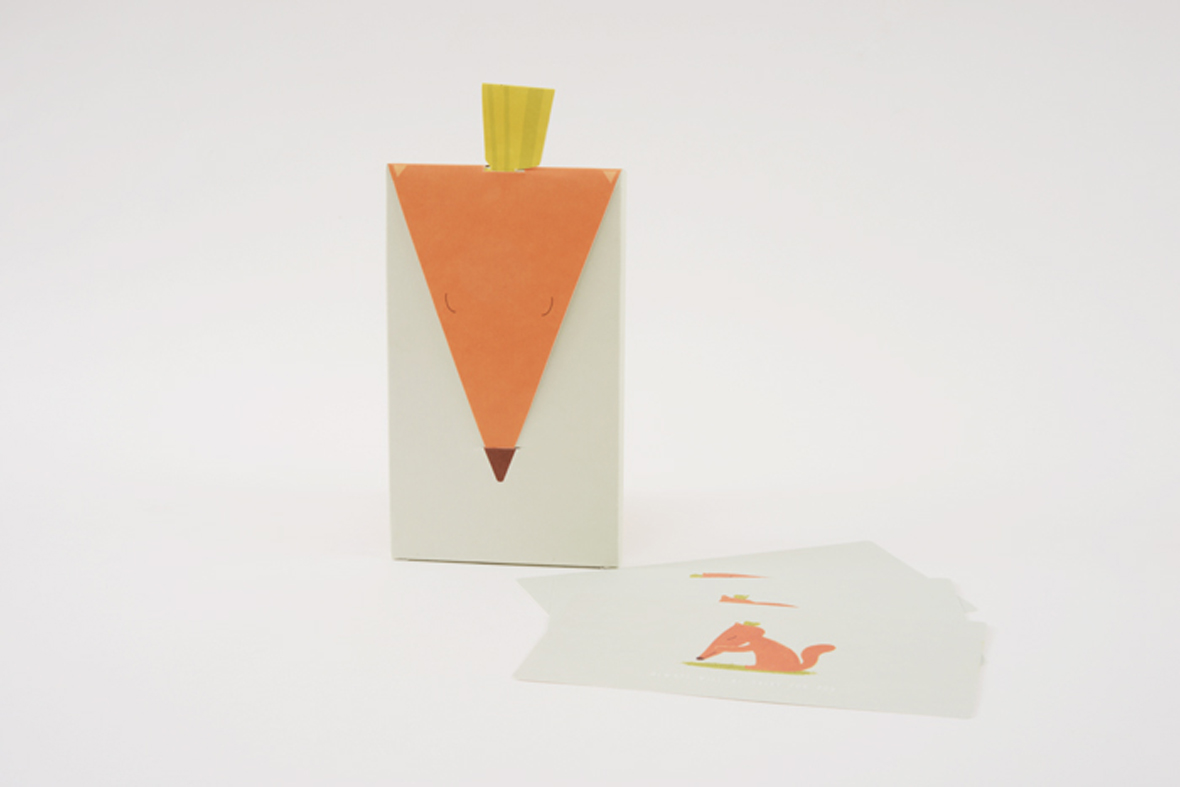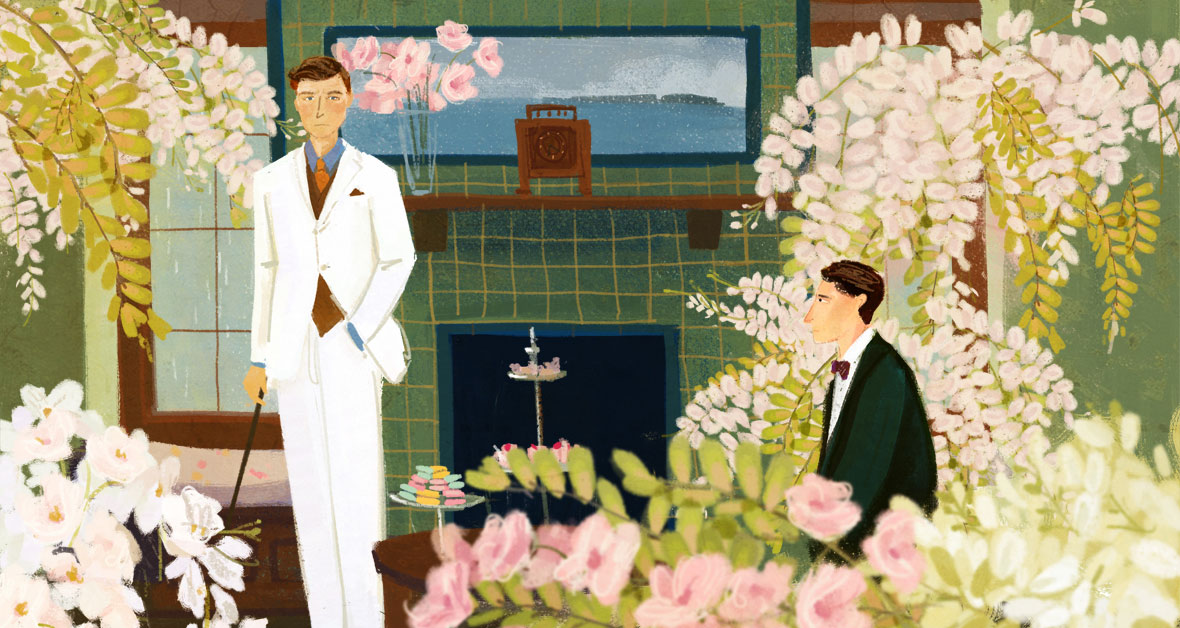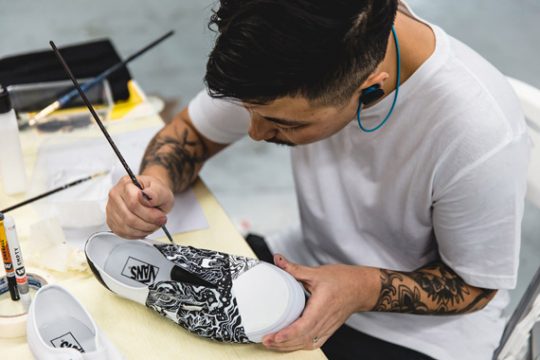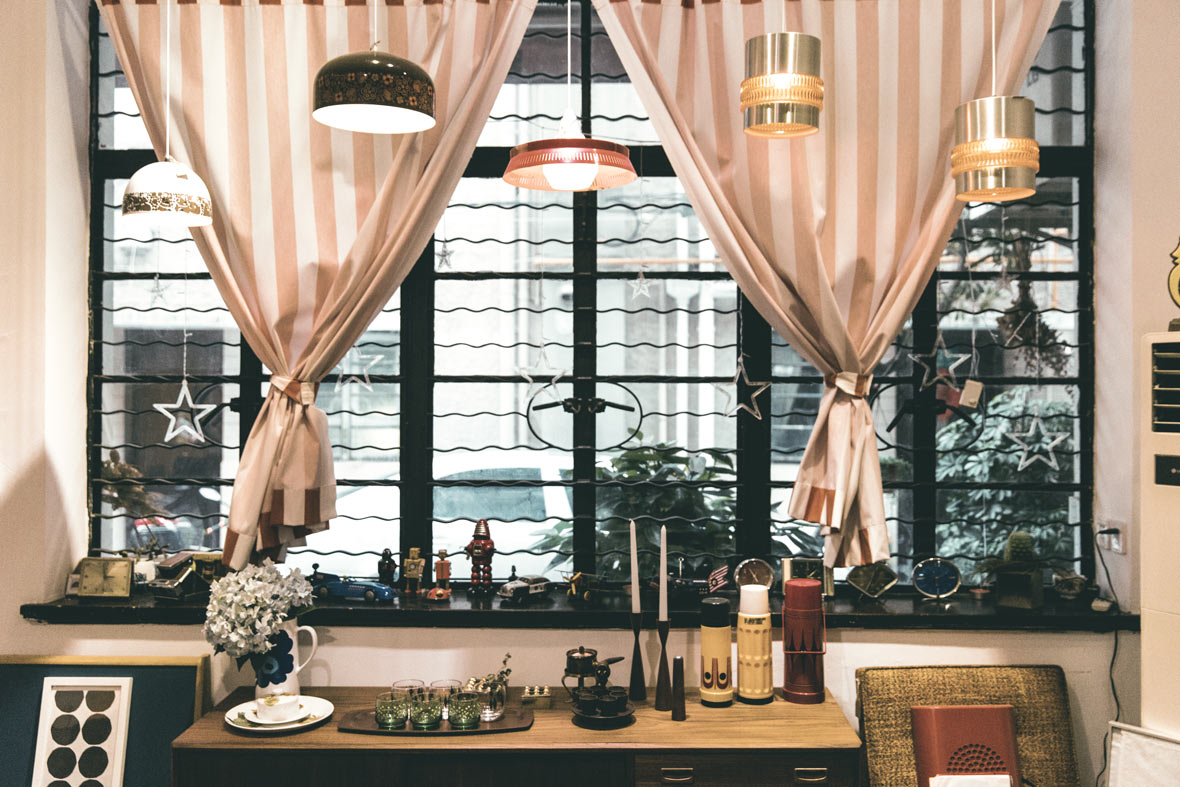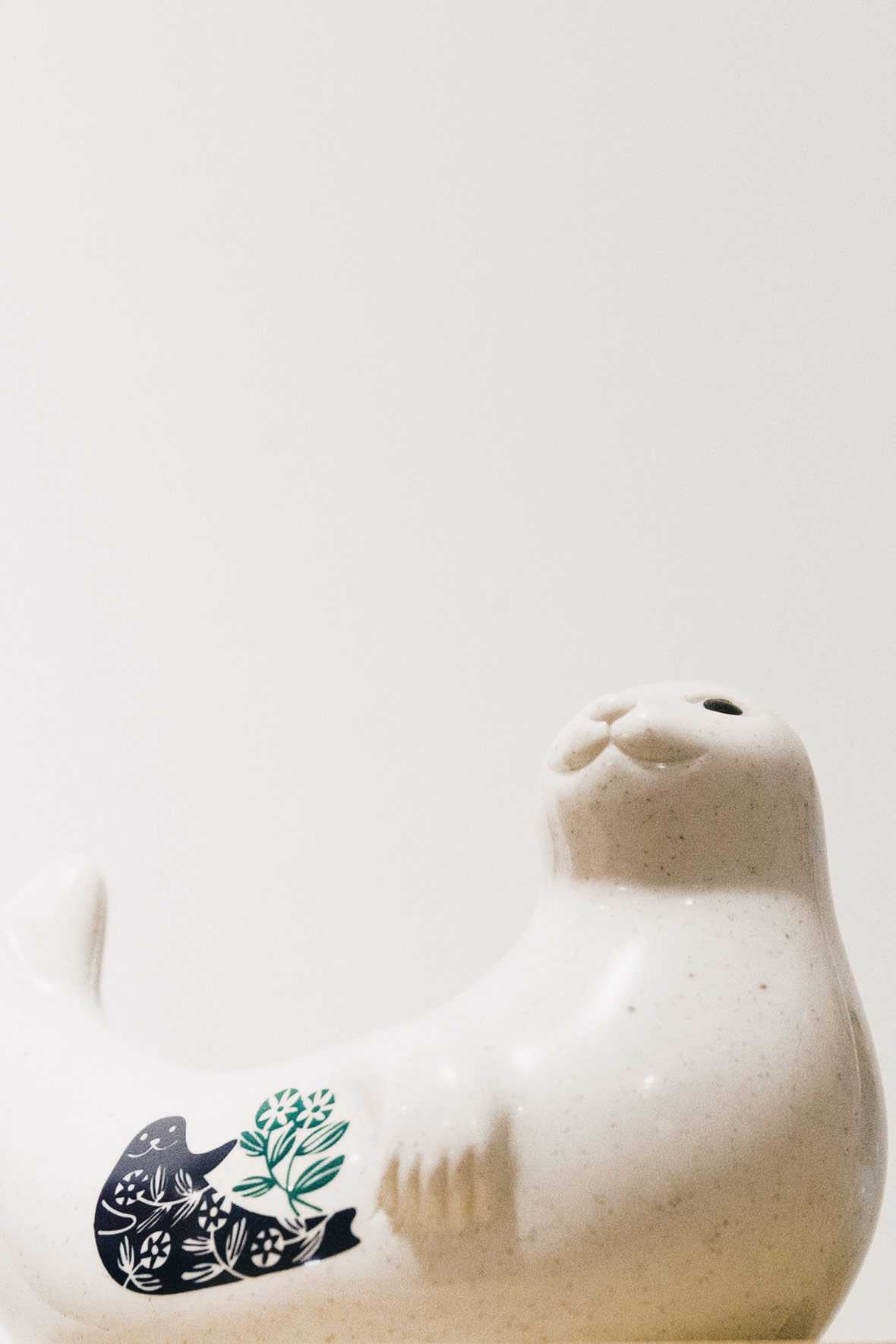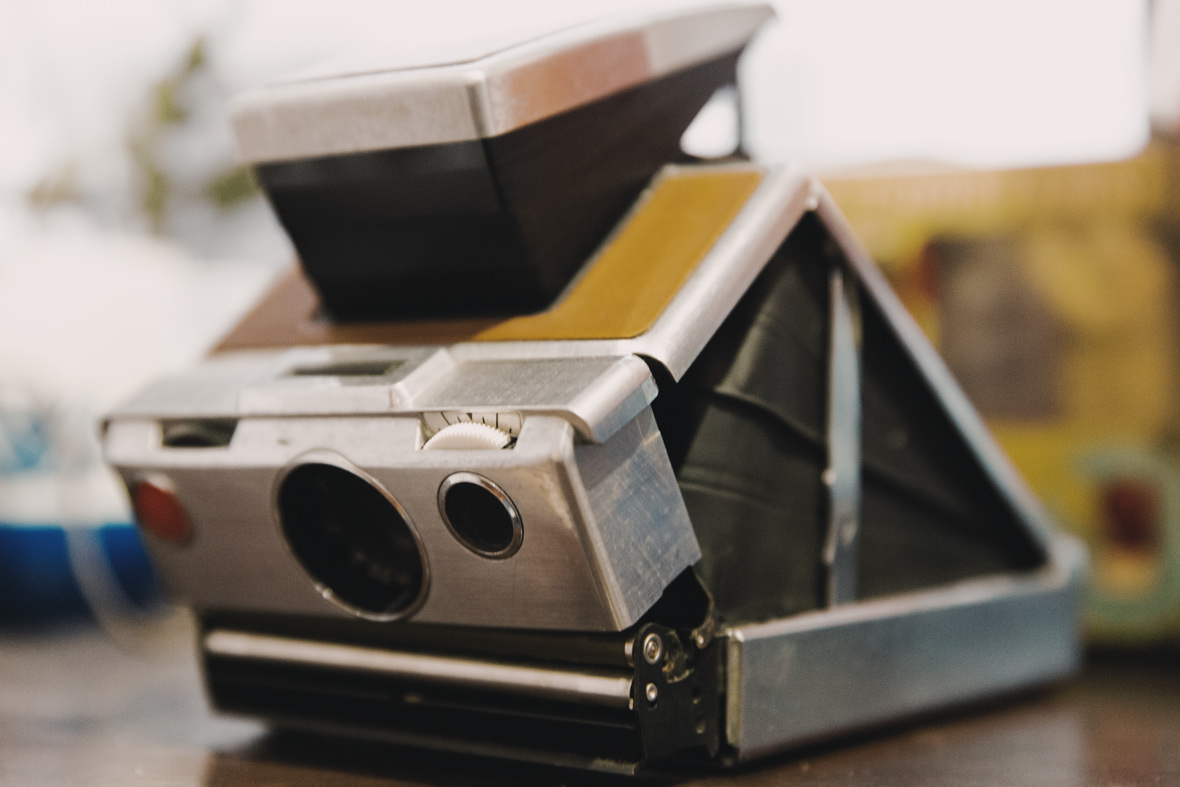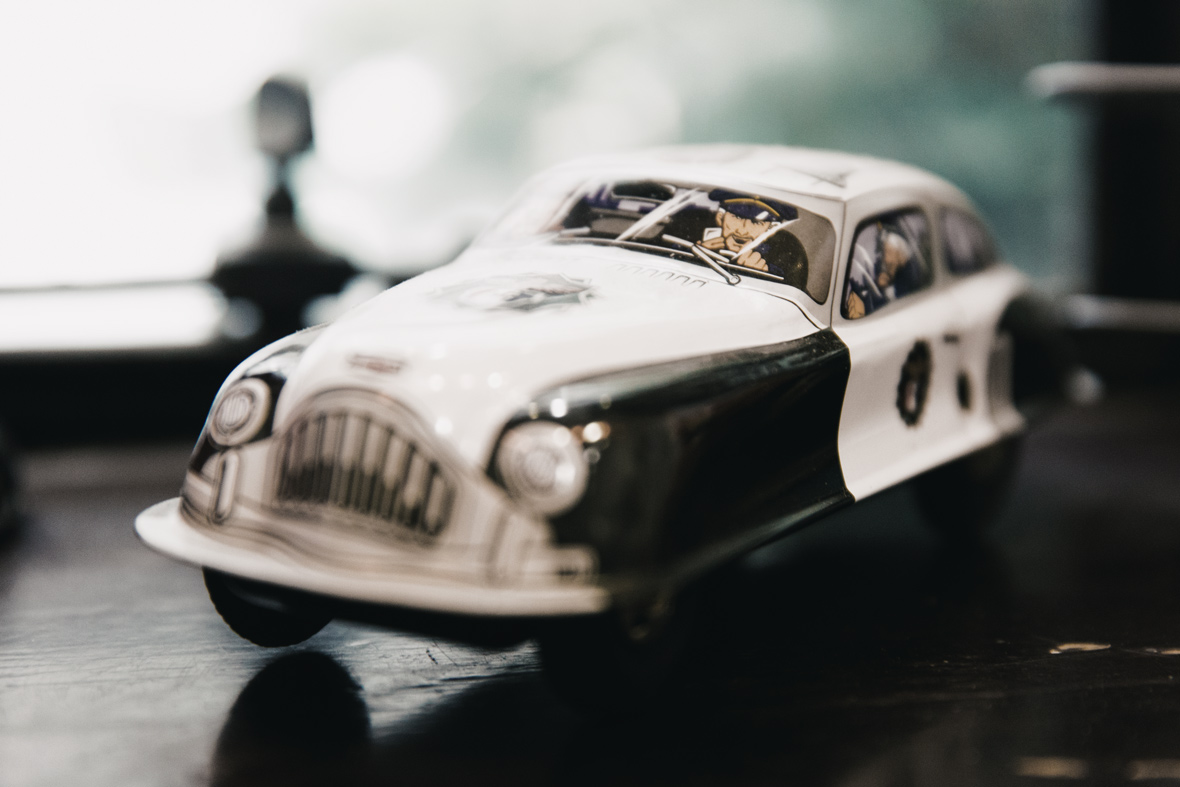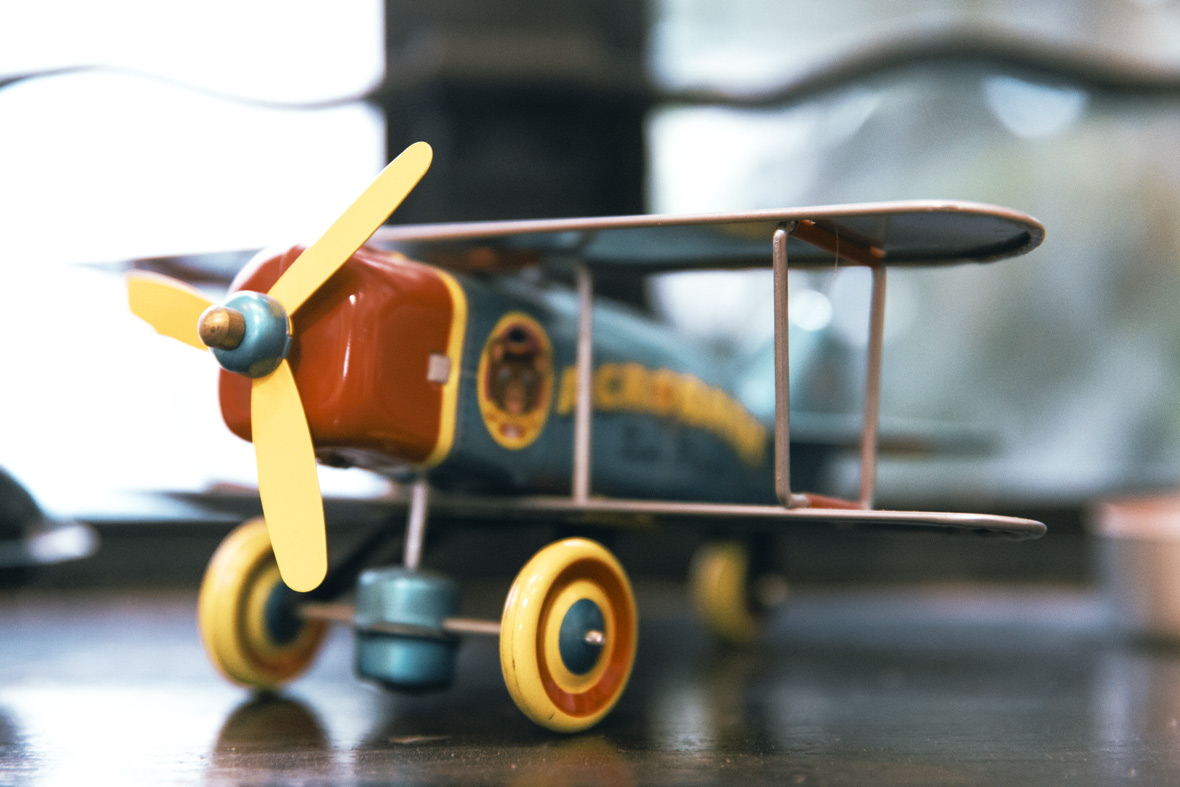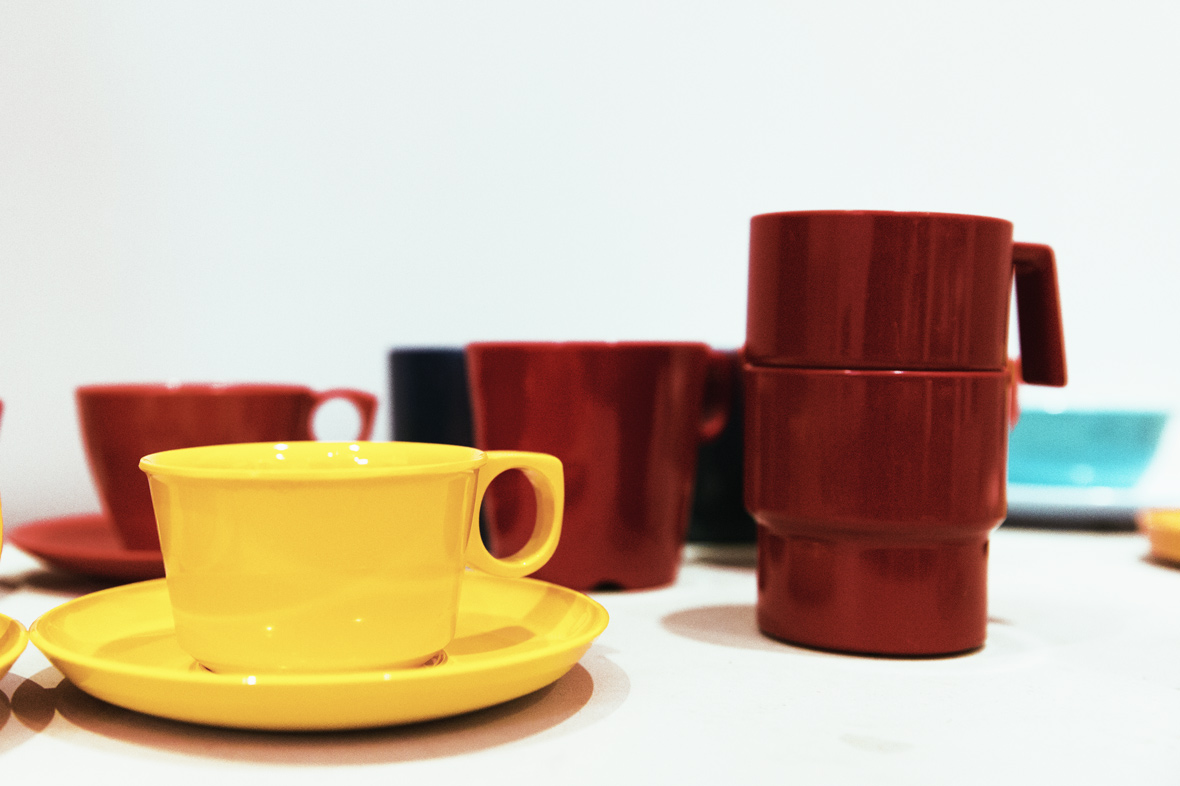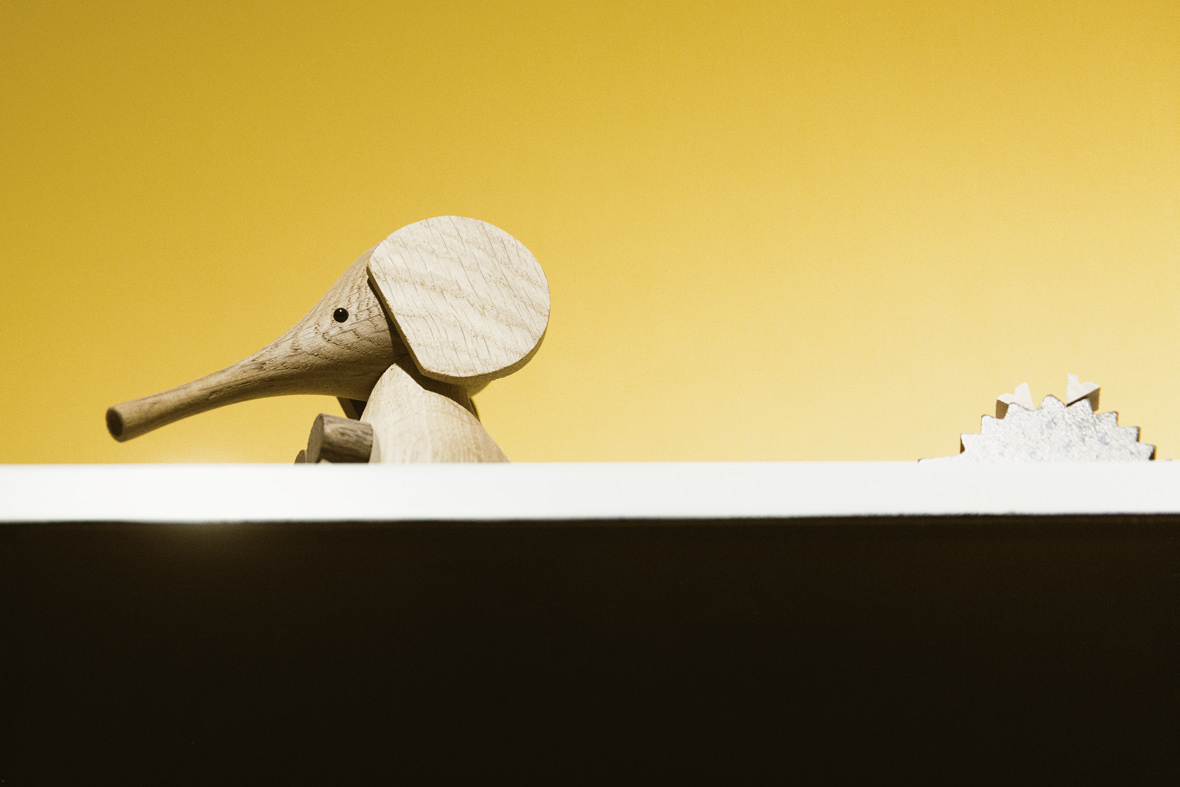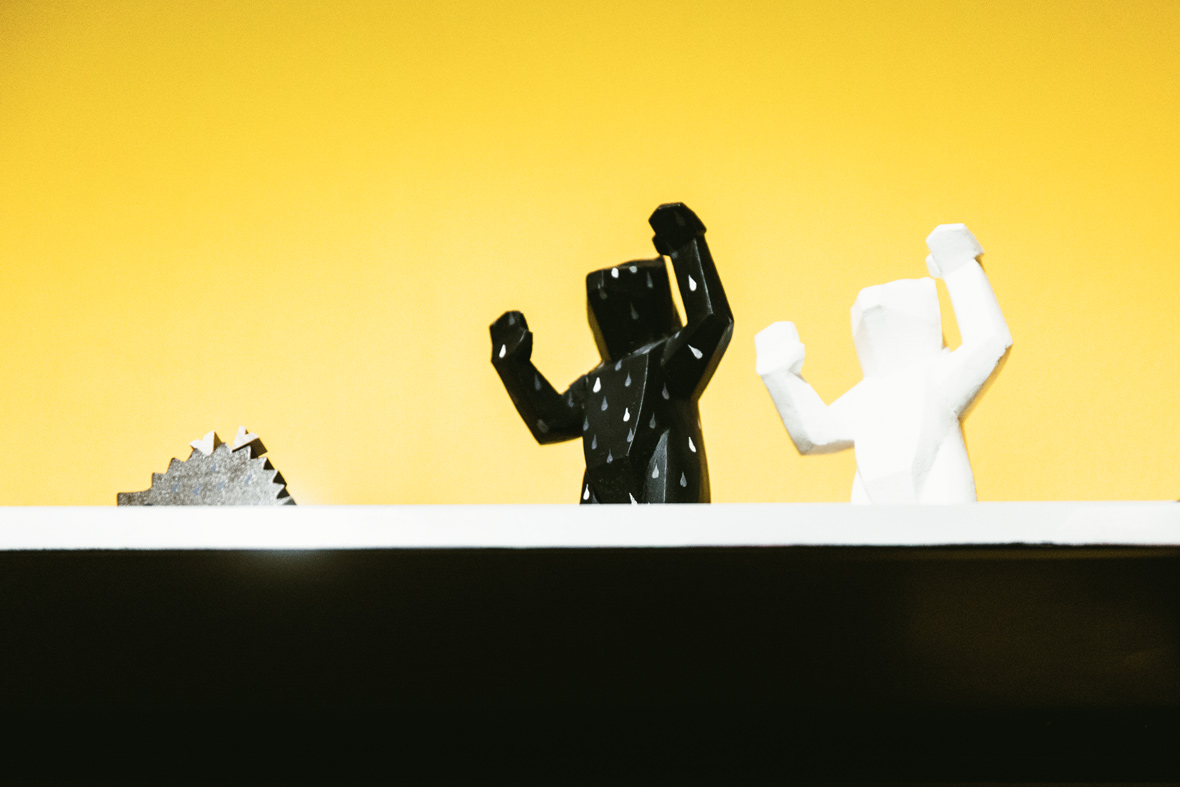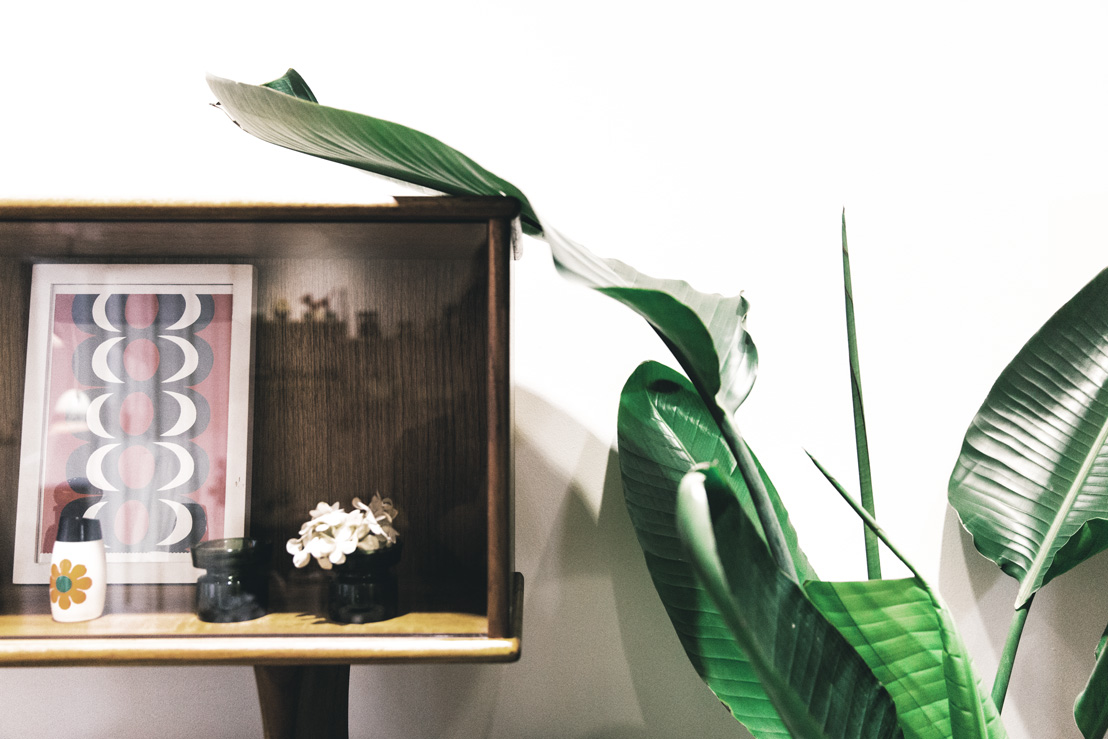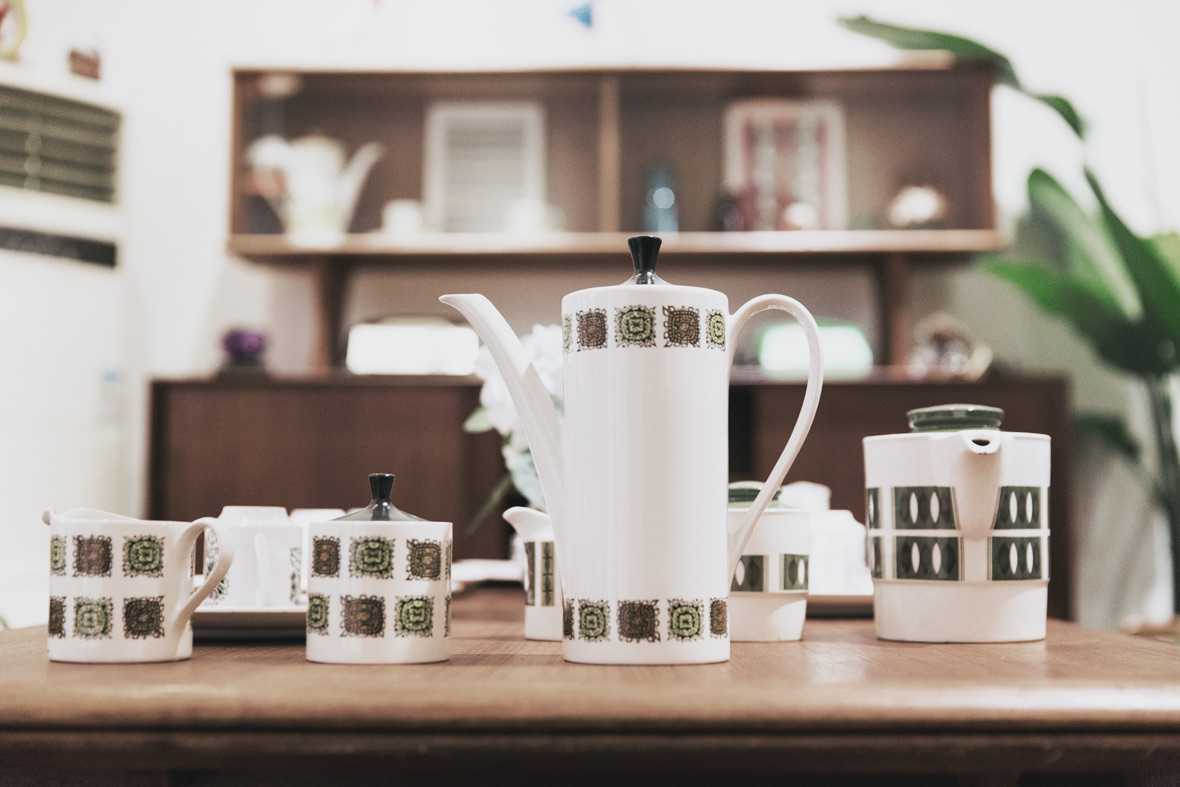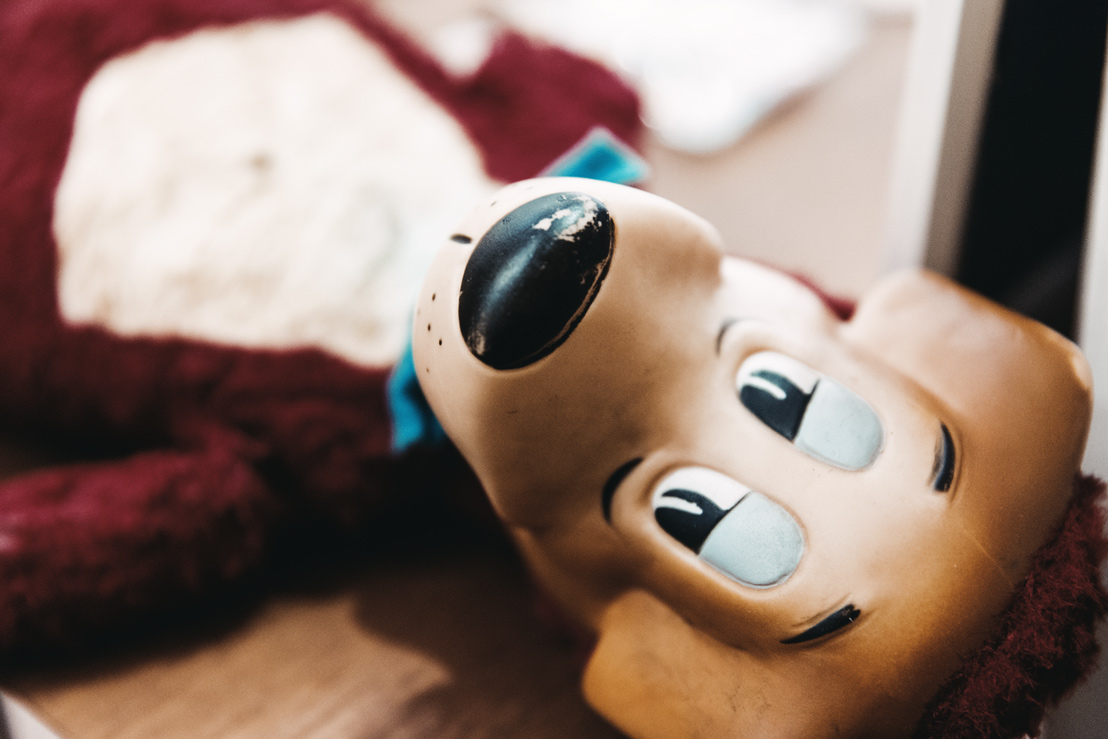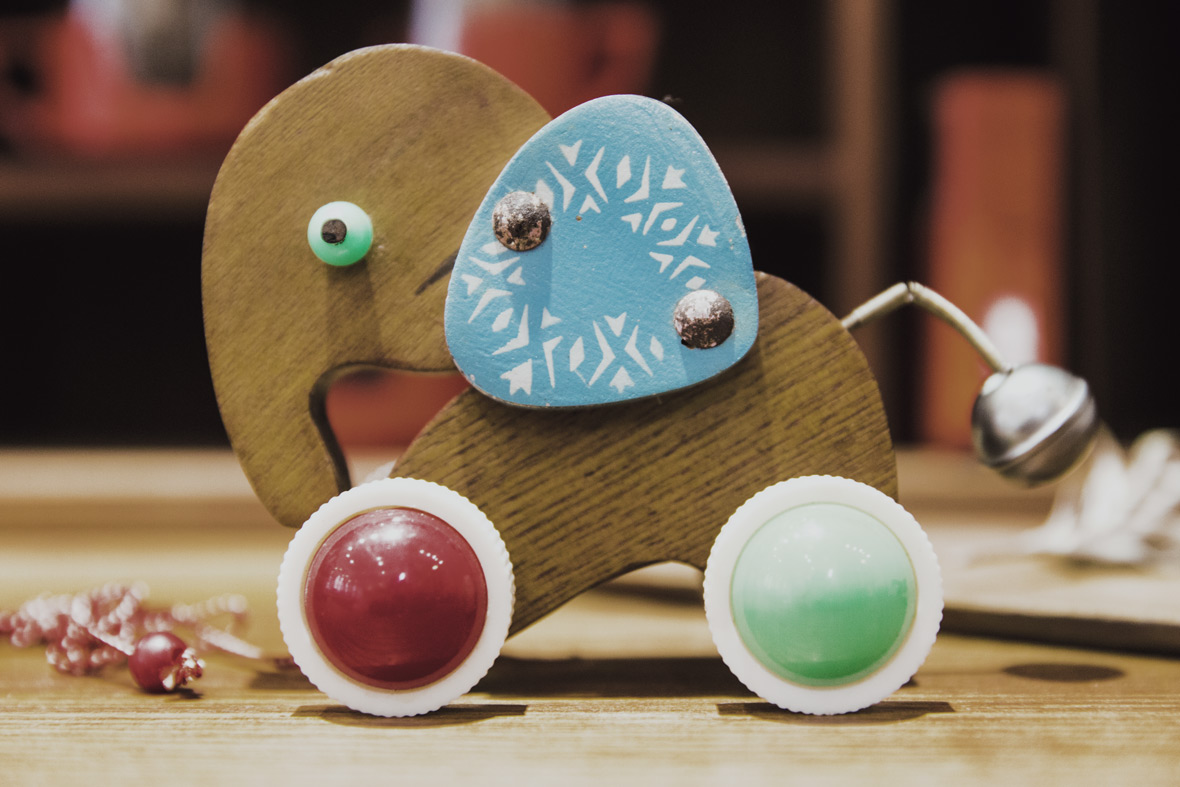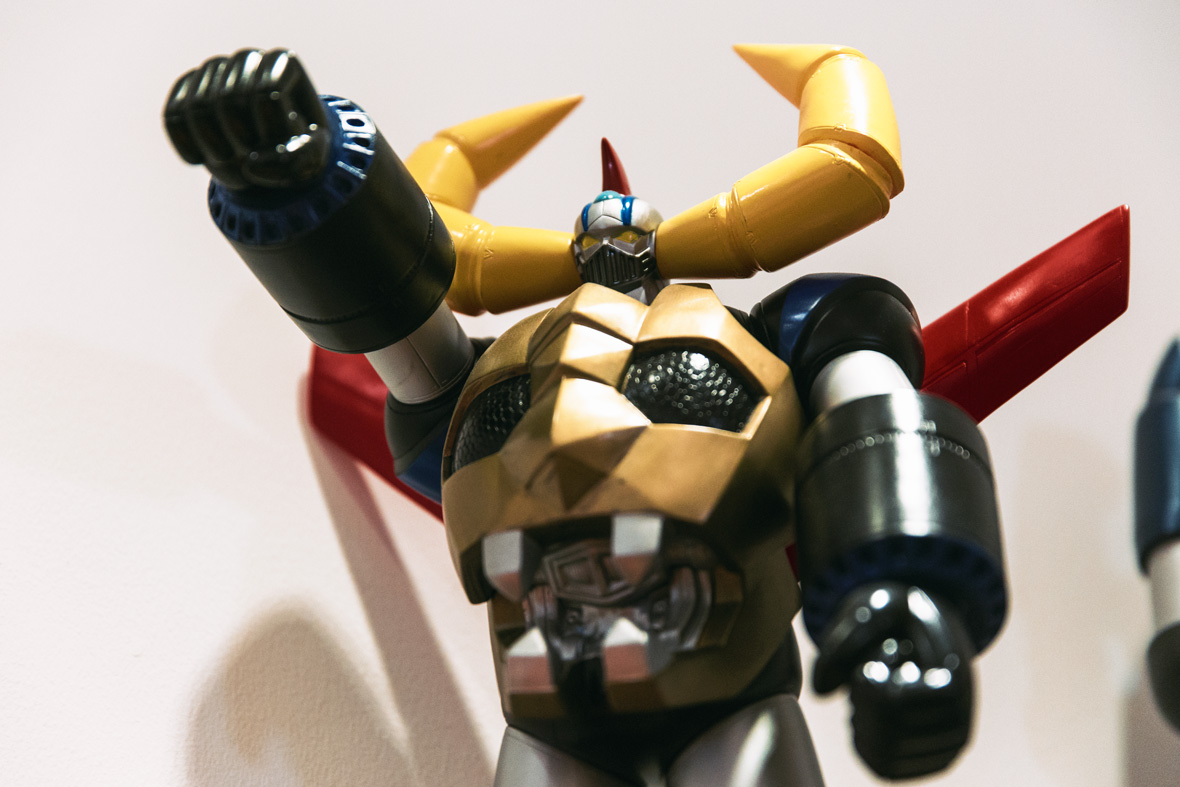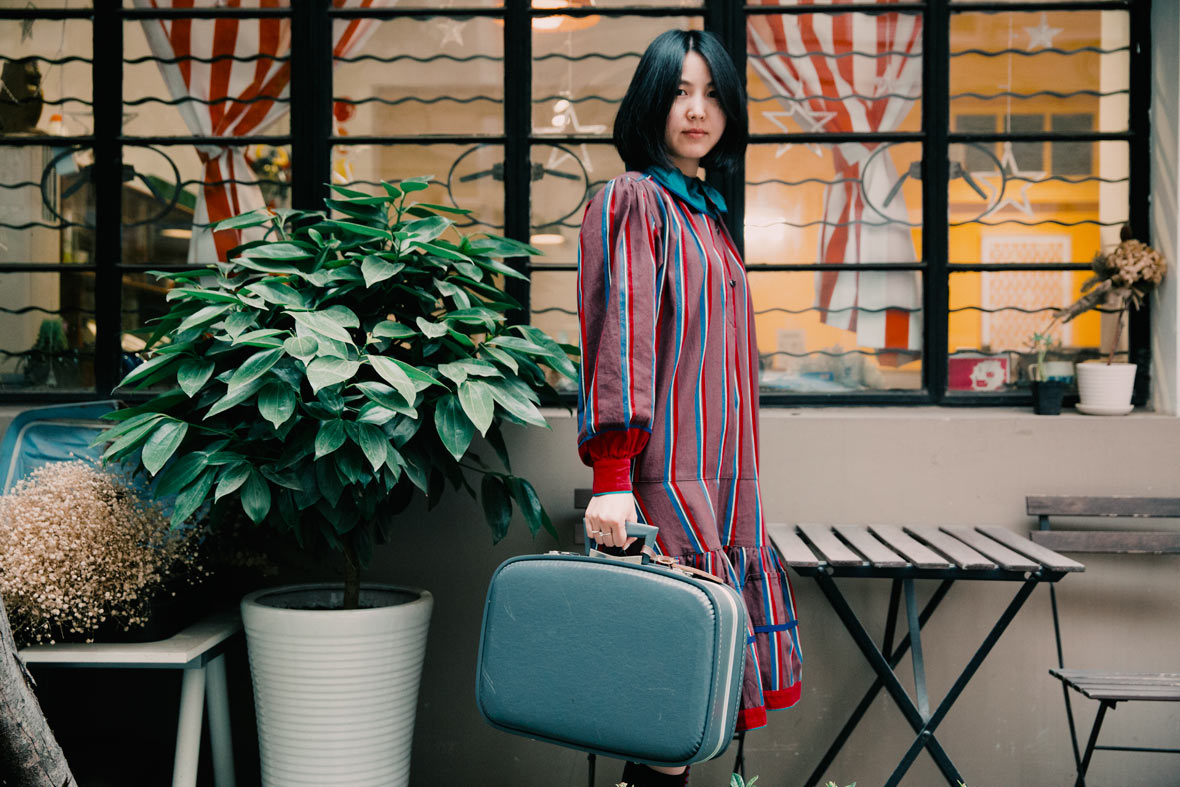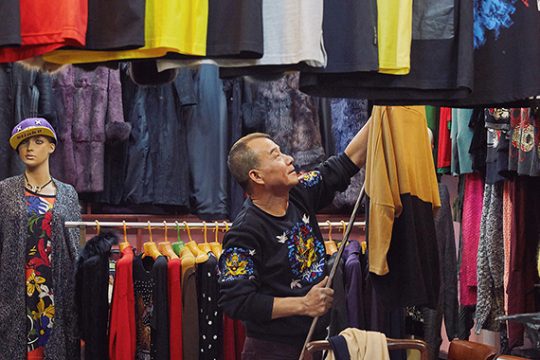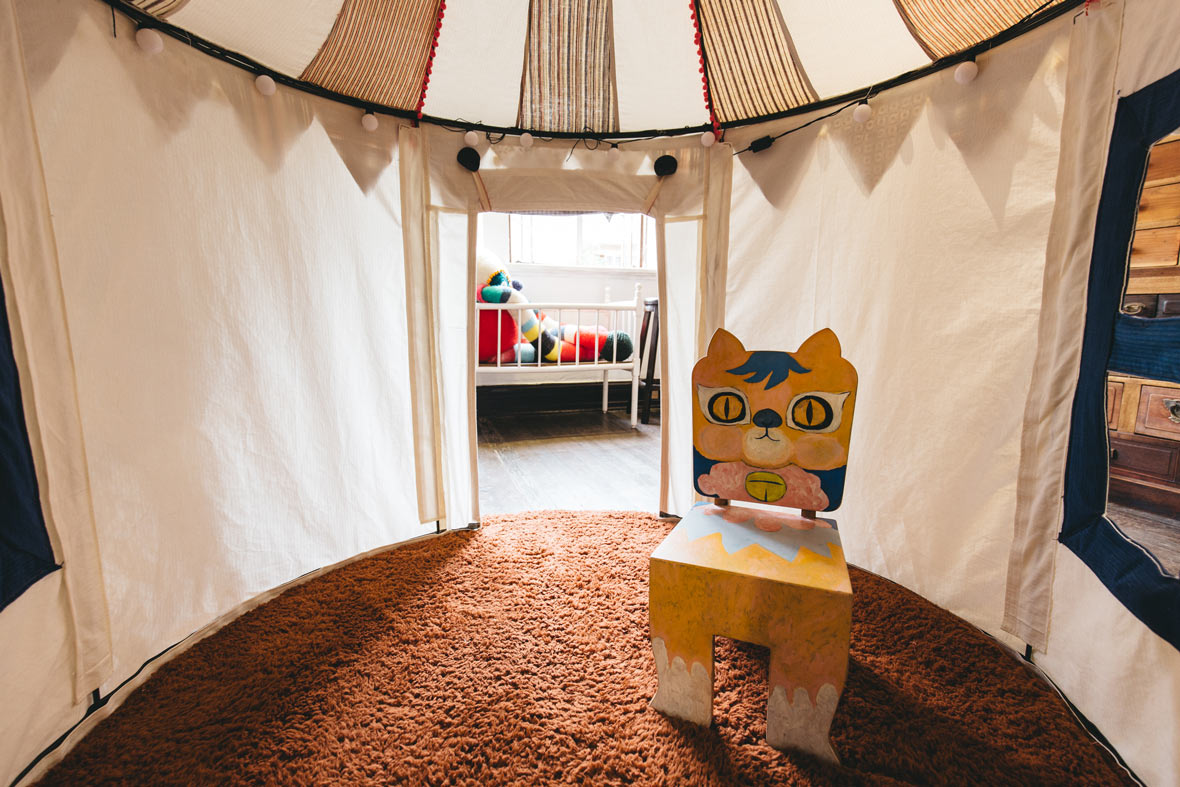
Brut Cake is a brand that’s devoted to enriching people’s lives with creativity and art through functional products. Founded in 2011 by Nicole Teng, who moved from Taiwan to China in 2007. She quickly found herself captivated by the contagiously creative energy of Shanghai. So after spending a year in this city, she decided to quit her decade-long career in advertising and sate her creative needs. Nicole then became a gallery curator at the now defunct Plum Gallery and pursued different creative outlets like painting and ceramics in her free time. After dabbling in a variety of mediums and slowly building a body of creative work of her own, she finally started to hone in on her artistic voice. “I realized that making something, giving it to somebody, and seeing them use it in their daily life provided me an incredibly rewarding feeling.”
Brut Cake创立于2011年,通过功能产品,品牌专注于将创意和艺术注入日常生活。创始人Nicole Teng (邓乃瑄) 来自台湾,2007年时搬至上海后,她很快就被上海那种具有传染性的创意能量所征服。一年以后,在广告圈摸爬滚打十余年的她,毅然决然地离开了原本的工作,开始追求自己创作的梦想。之后,Nicole在如今不复存在的Plum Gallery成为一名策展人,空余时间便穿梭于绘画和陶艺等不同的创作方式中。在涉猎各种媒介、进行了各样创作后,她终于开始有了自己的艺术理念并紧紧追随。“我发现当自己亲手做出来的东西,能够在生活中为他人所用,自己会得到莫大的满足感。”
Nicole has a special gift, in that she’s able to perceive a sense of beauty in old objects that others might see as useless. Brut Cake’s entire collection of products is reflective of her vision; they’re all handcrafted using discarded items such as old furniture and antique fabrics. Nicole has a wide variety of products available underneath the brand: furniture, ceramic wares, handbags, and even oven mitts. Her vivid imagination has transformed countless unwanted items into highly coveted, functional works of art.
Nicole总能在被许多人视为无用的旧物件中发现美。Brut Cake的全系列产品就是她个人视觉的体现,它们全部由旧家具等废弃物品以及夏布经手工打造而成。品牌之下有着各种各样的产品,有家具、陶器、手包,甚至手套。她用自己的奇思妙想,将无数被人丢弃的物件转化为令人垂涎的功能艺术作品。
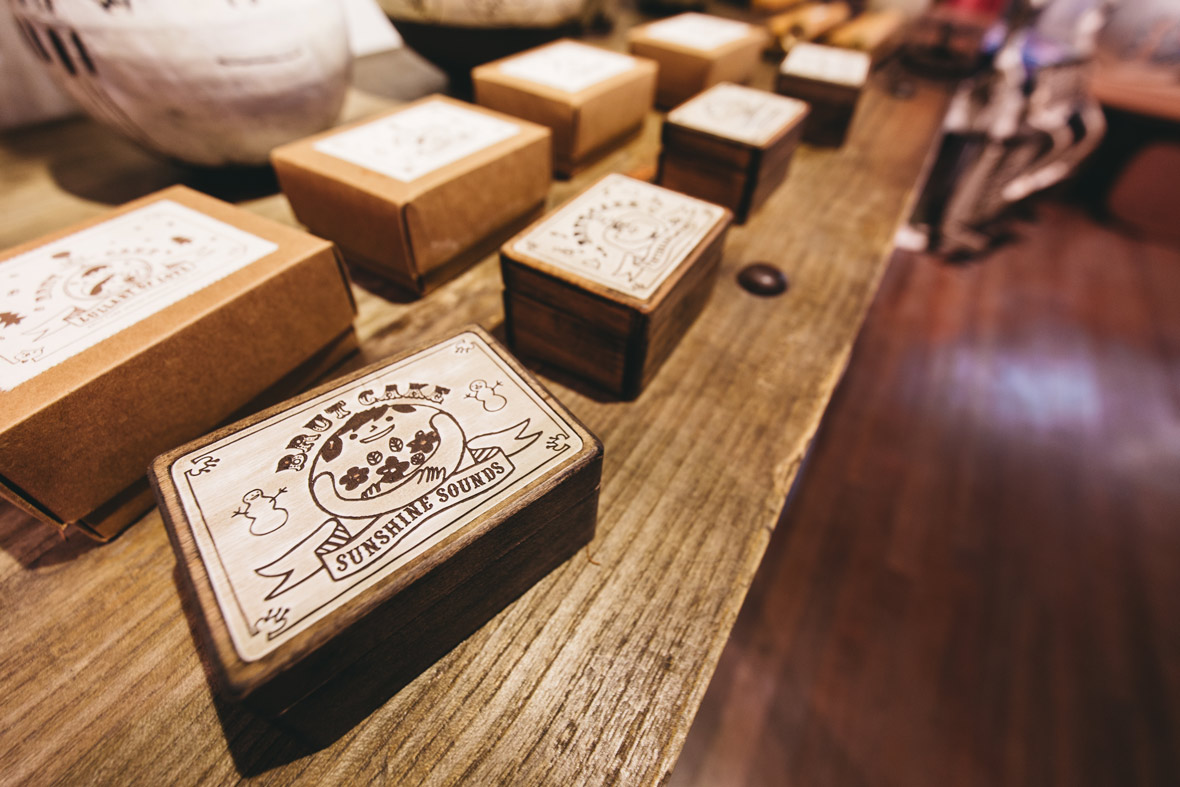
People are often curious as to how the name Brut Cake came about, Nicole says. “Brut is actually a French word. In English, it means ‘rough and raw’. In the 19th century, the term ’Art Brut’ came about. This type of art was created outside of the established art scene and wasn’t confined by the realities of daily life. I’m deeply influenced by this style. I’m fond of raw, rugged, and vigorous forms of creative expression. Most of my work is inspired by this. That’s why I chose to use the word ‘Brut’ in my brand. The reason I chose the word cake is a simple one: it’s meant to represent the sweetest parts in life. I hope that every single thing I make can bring a little bit of happiness to people’s everyday lives. So that’s how my brand name, or the name of this creative concept rather, became Brut Cake.”
很多人好奇为什么会给品牌取名为Brut Cake,Nicole告诉我们,“‘Brut’ 其实是个法文字,在英文里面的意思是‘rough and raw’,就是很粗旷很原生的意思。在19世纪初,有个艺术流派叫做Art Brut,这个学派的人特别喜欢未经洗礼或者未受真实生活所限制的一些创作表现。我深受这个艺术风格的影响,特别喜欢很原生态、很粗旷、很生猛地去表达你自己灵魂的创作表现。我的创作很多是受这个艺术派别的启发,所以我就把Brut作为我的一个创作语言。Cake的艺术呢,其实很简单,这个代表了生活的一点甜味,我希望我所做的每一个东西,都是可以给人们每天的生活带来一点点幸福感,所以,我就把我的品牌,或者说创作的概念取名为Brut Cake。”
To Nicole, every object has a soul and personality of its own; she might see certain items as being “arrogant” while others might seem “lazy”. This personification of inanimate objects reflects in her work and is easily seen in the facial features she includes on her products. Nicole likens her creation process to the way kids invent imaginary friends.
在Nicole看来,每个物件里都住着一个灵魂,有着自己的个性,或“高傲”,或“慵懒”。在她的作品里,在她产品的拟人化形象中,她对物件的人格化可见一斑。Nicole将她对这些创作过程,比作是小朋友在脑海中创造出自己想象中的朋友。
For International Children’s Day in 2016, Brut Cake hosted a special Children’s Day party in Shanghai on the second floor of their brand concept showroom on Anfu Road. A collection of children’s chairs, designed in the signature Brut Cake aesthetic, were the centerpieces of the event. These child-sized chairs all featured friendly, smiling faces stitched together with vintage fabrics. Like most of Nicole’s designs, the chairs more closely resembled cartoon characters than pieces of furniture. Nicole says, “I’ve always wanted to bring my imaginary world to life, and dedicate it to all the kids in the world. I would’ve wanted things like these to play with when I was a kid, so I feel like these creations will resonate with them.”
在2016年的儿童节之际,Brut Cake在安福路的品牌概念展示空间的二楼,为小朋友们举办了一场特殊的派对。在这场派对中的中心物件是一个儿童座椅系列,它们的设计沿袭Brut Cake一贯的视觉风格。这些座椅全部做成适合儿童使用的尺寸,有着由夏布缝制而成的笑脸。正如Nicole的大多数设计一样,相比于作为一件件家具,这些椅子更像是各种不同的卡通角色。Nicole说:“我想把我的想象世界落实出来,然后把这个系列献给小朋友们,我觉得我想象中的这些东西,小朋友们也一定非常有共鸣,就像我小时候那样,也很想和这样的东西玩在一起。”
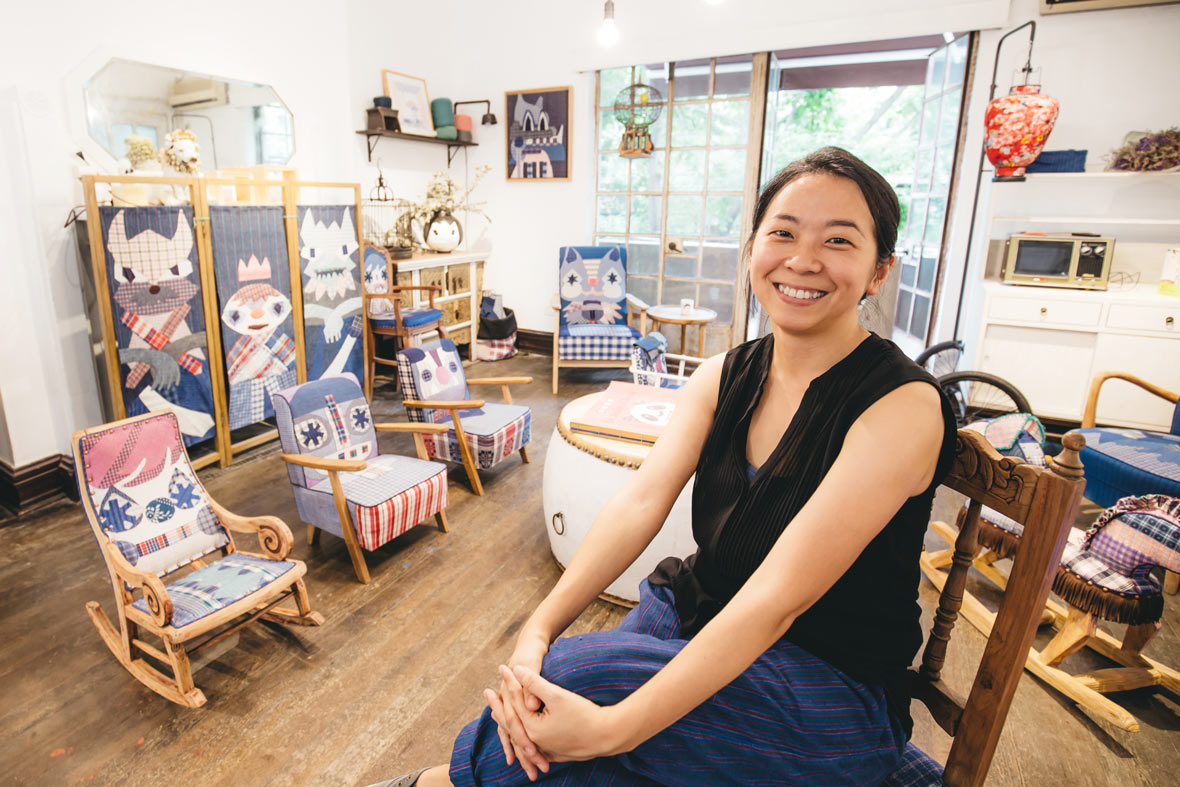
Nicole has always been fascinated with traditional Chinese artisanal crafts. “If I lived a thousand years ago. I would probably enjoy the lifestyle of that time period a lot more than the lifestyle of today. Modern day development is happening too quickly. I feel like traditional crafts aren’t slowly fading away, but instead they’re rapidly being forgotten. Even if my contributions are minor, I still hope the things I make can help preserve this dying art form a little,” she says. “My work involves a lot of traditional carpentry and tailoring. Quite often, I’m working alongside older craftsmen well-versed in traditional techniques, and they help me complete my vision. To me, this is something really meaningful.”
Nicole一直痴迷于中国的传统工艺,她说:“如果生活在一千年以前,我会很享受那个生活。现在大环境发展得太快速了,所以我觉得,这些传统的工艺它不是在逐渐地消失,而是很迅速地被遗忘。我希望能够做一点什么东西,或多或少去保存它。其实我的创作里面,有很多是夹杂着传统的木工或者是裁缝,有很传统的老工艺人来配合我,一起做我想做的东西。对于我来说,这是很有意义的。”
People in our modern age of technology favor efficiency and speed, so factories are often the preferred method of production for most people. Making items by hand are seen as inefficient, and this has led to a pitiful lack of regard for the intricacies that go behind handmade creations. Nicole says, “Chinese craftsmen and Japanese craftsmen might dedicate their entire life to a particular craft. This is something I really admire. I hope to improve and make even better things . . . I want everybody to feel the the sincerity and devotion that goes into every single one of Brut Cake’s creations.”
随着各行各业机械化生产的不断普及,手工艺人低效率,费时的劳作越来越得不到应有的重视,Nicole表示:“不论是中国的匠人还是日本的匠人,他们可能终其一生钻研一项工艺,这个是我非常非常敬佩的,我也希望我能够做得更好……也希望所有的人都可以感觉到Brut Cake在创作所有东西的时候,那个很专注、很诚挚的心。”
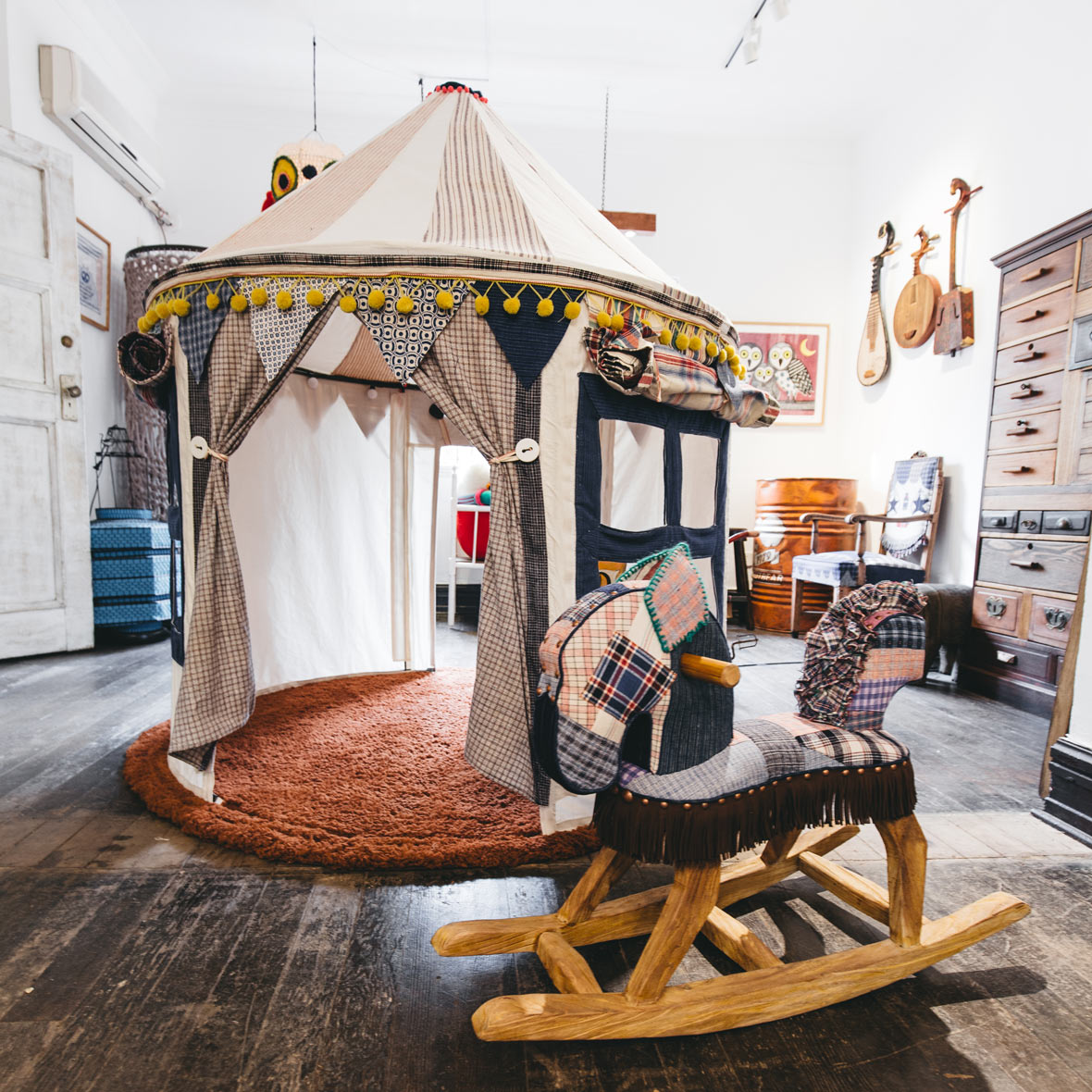
Address:
232 Anfu Road, 1F
Xuhui District, Shanghai
People’s Republic of China
Tel:
+0086-21-5448-8159
Hours:
11am~7pm
Website: brutcake.com
Facebook: ~/brutcake
Weibo: @brut_cake
WeChat: BrutCake
地址:
中国
上海市徐汇区
安福路232号1楼
电话:
+0086-21-5448-8159
营业时间:
11am~7pm
网站: brutcake.com
脸书: ~/brutcake
微博: @brut_cake
微信: BrutCake

